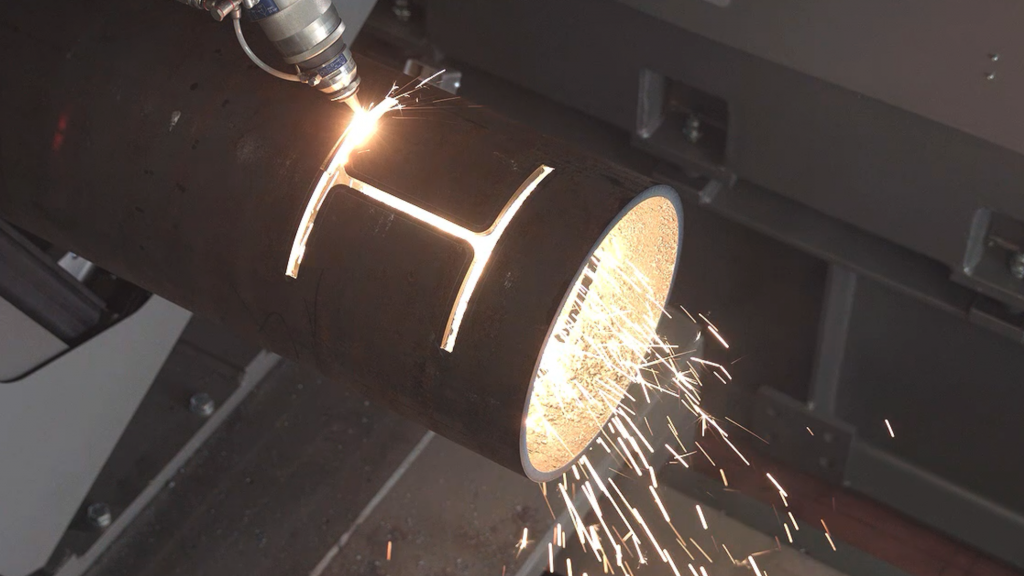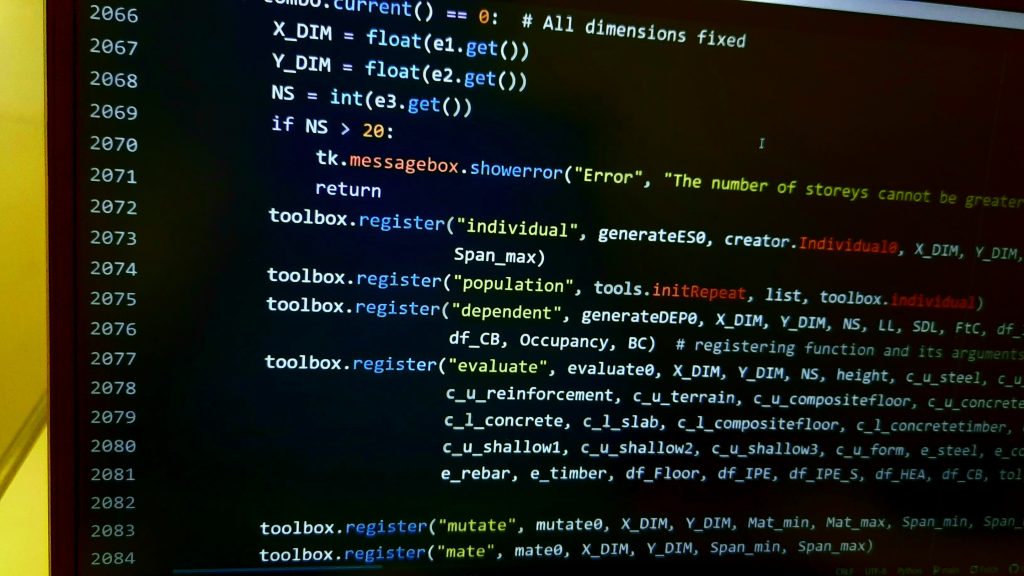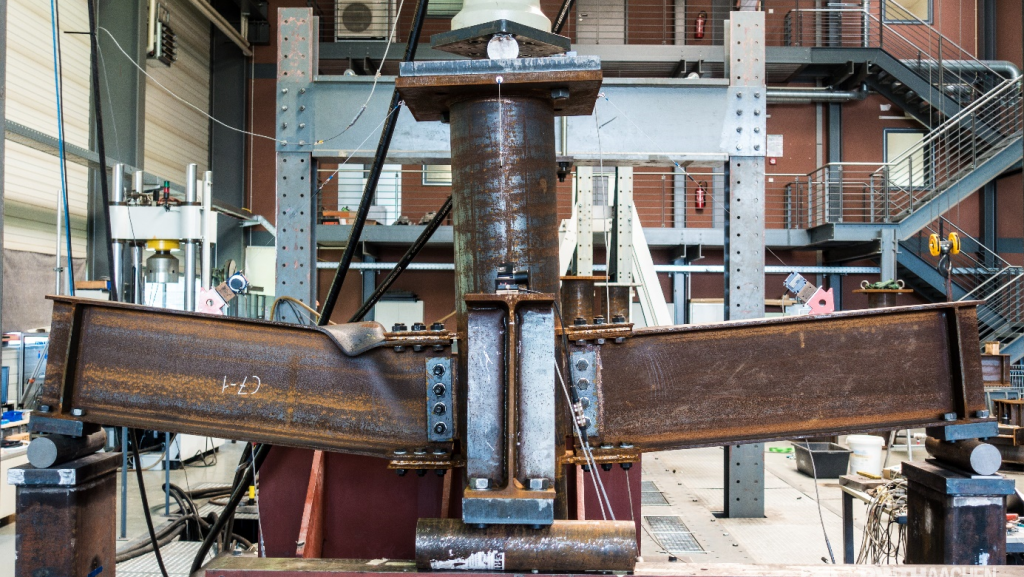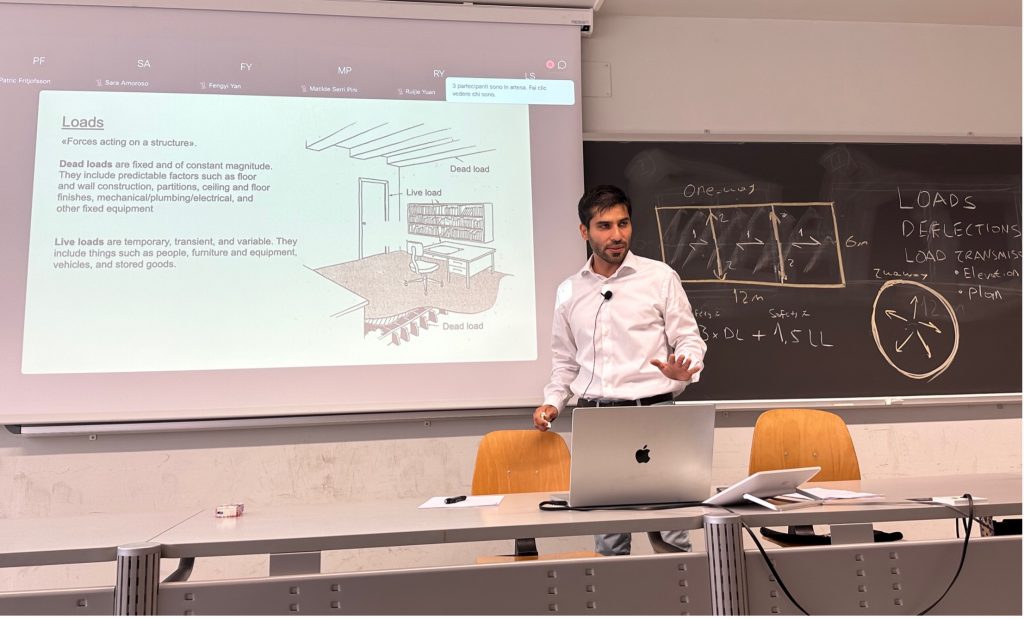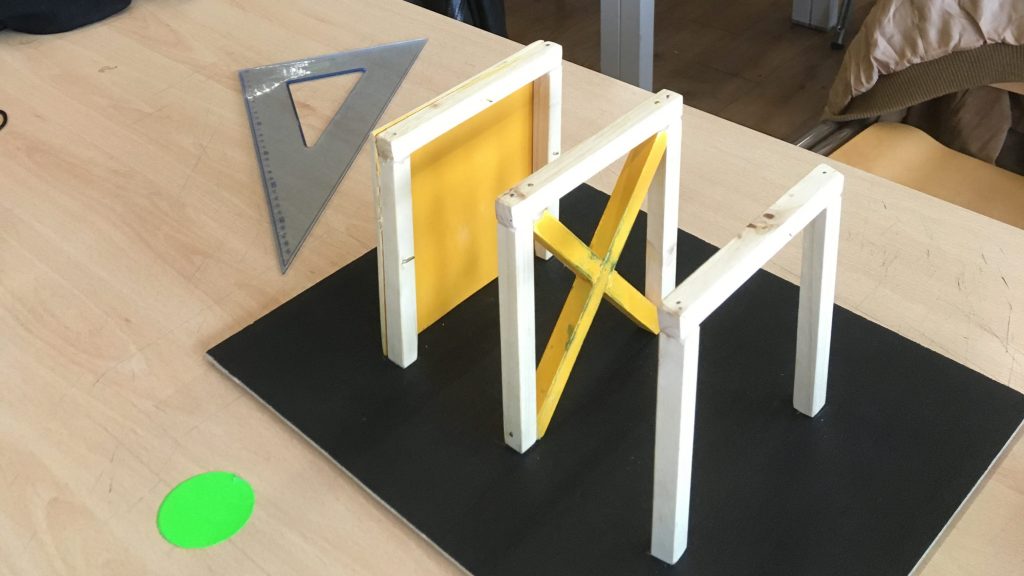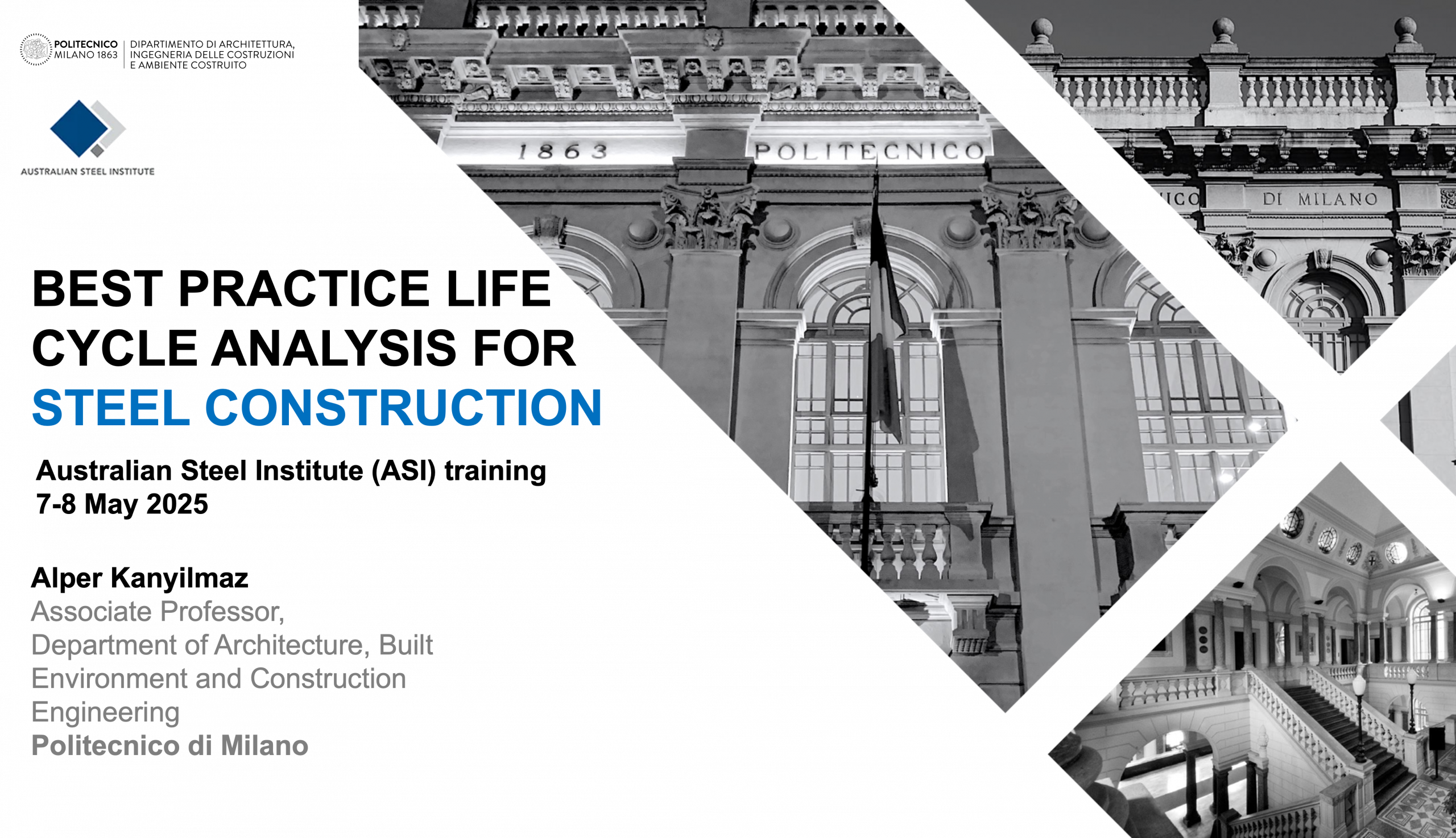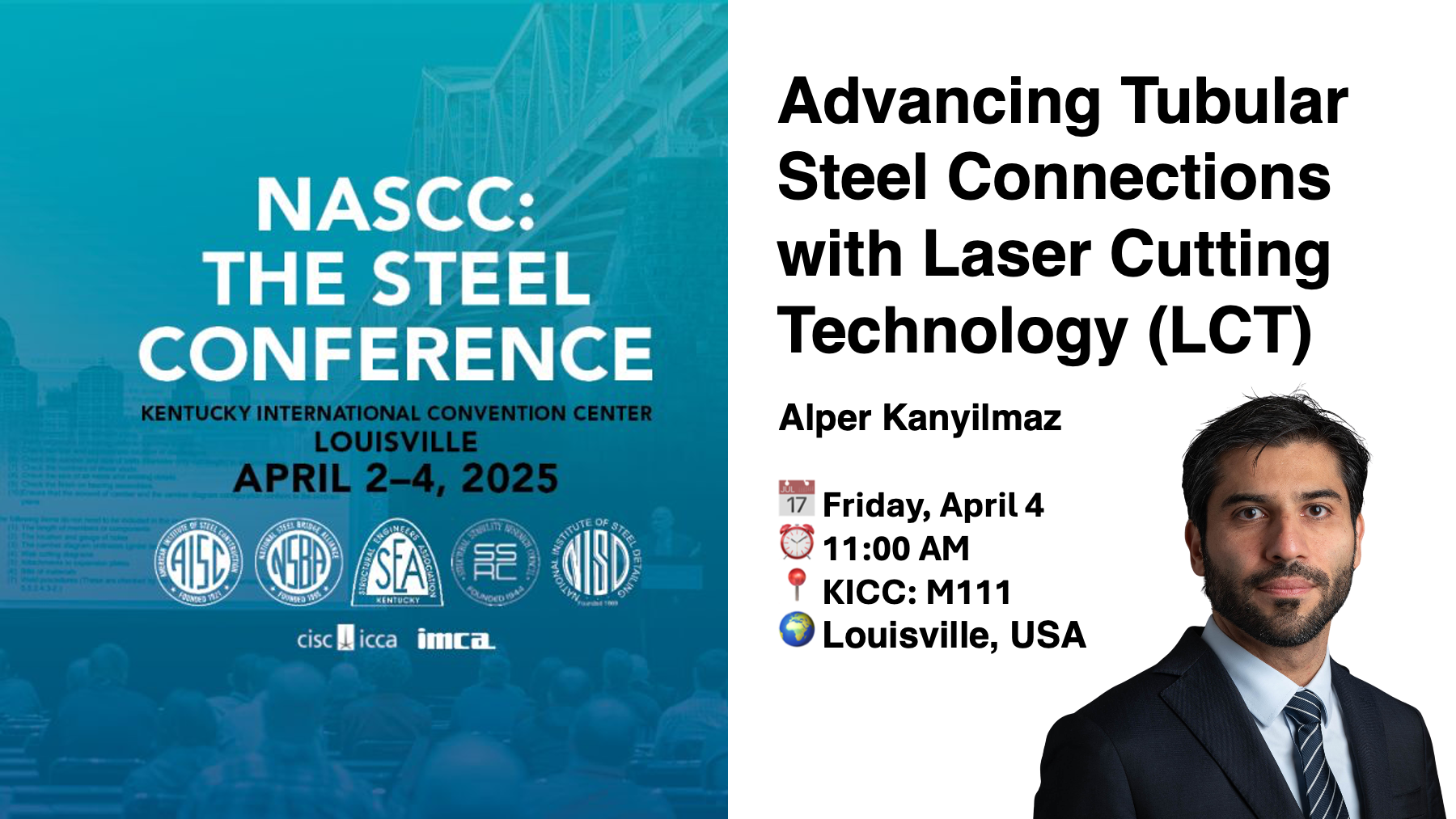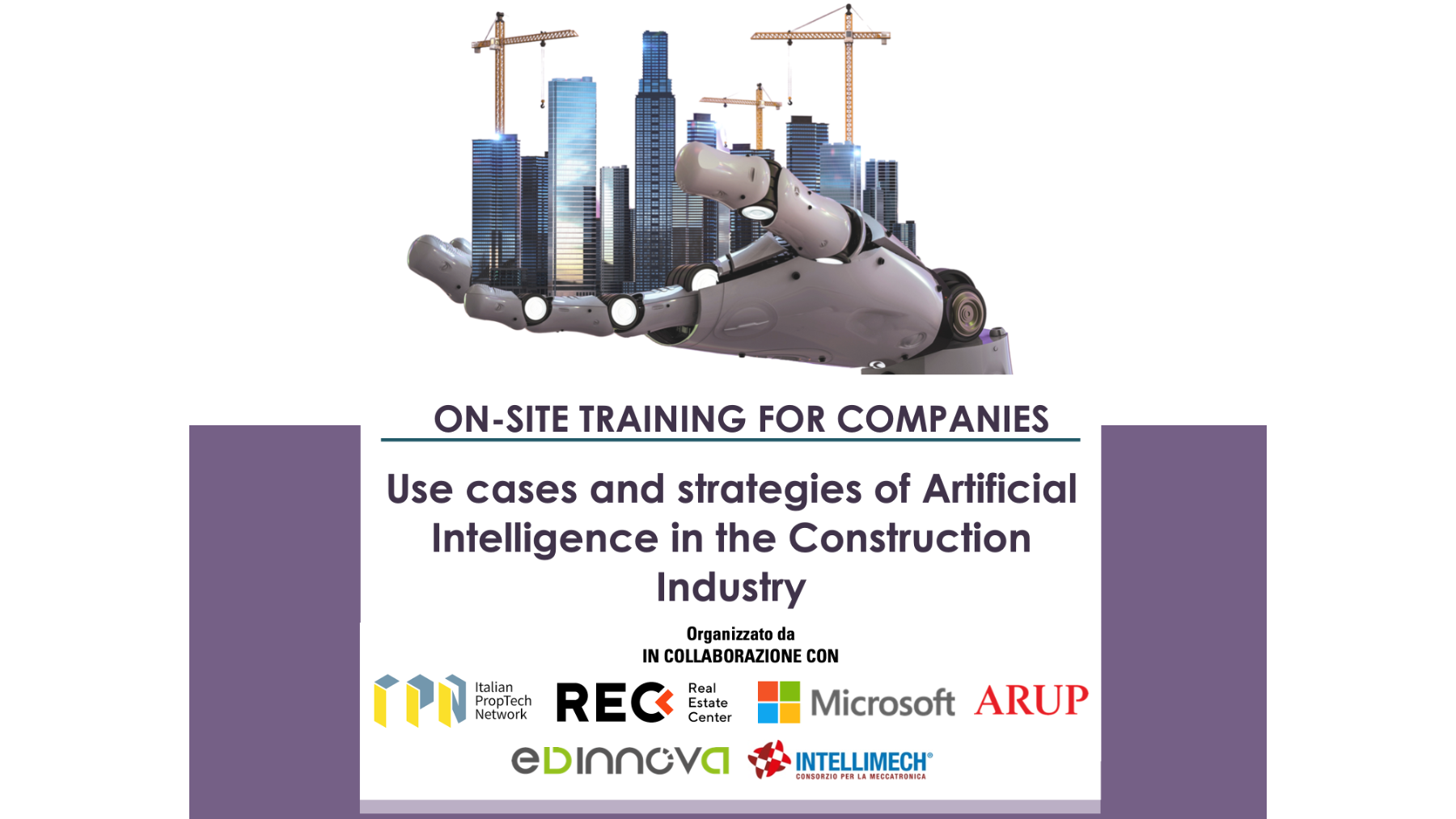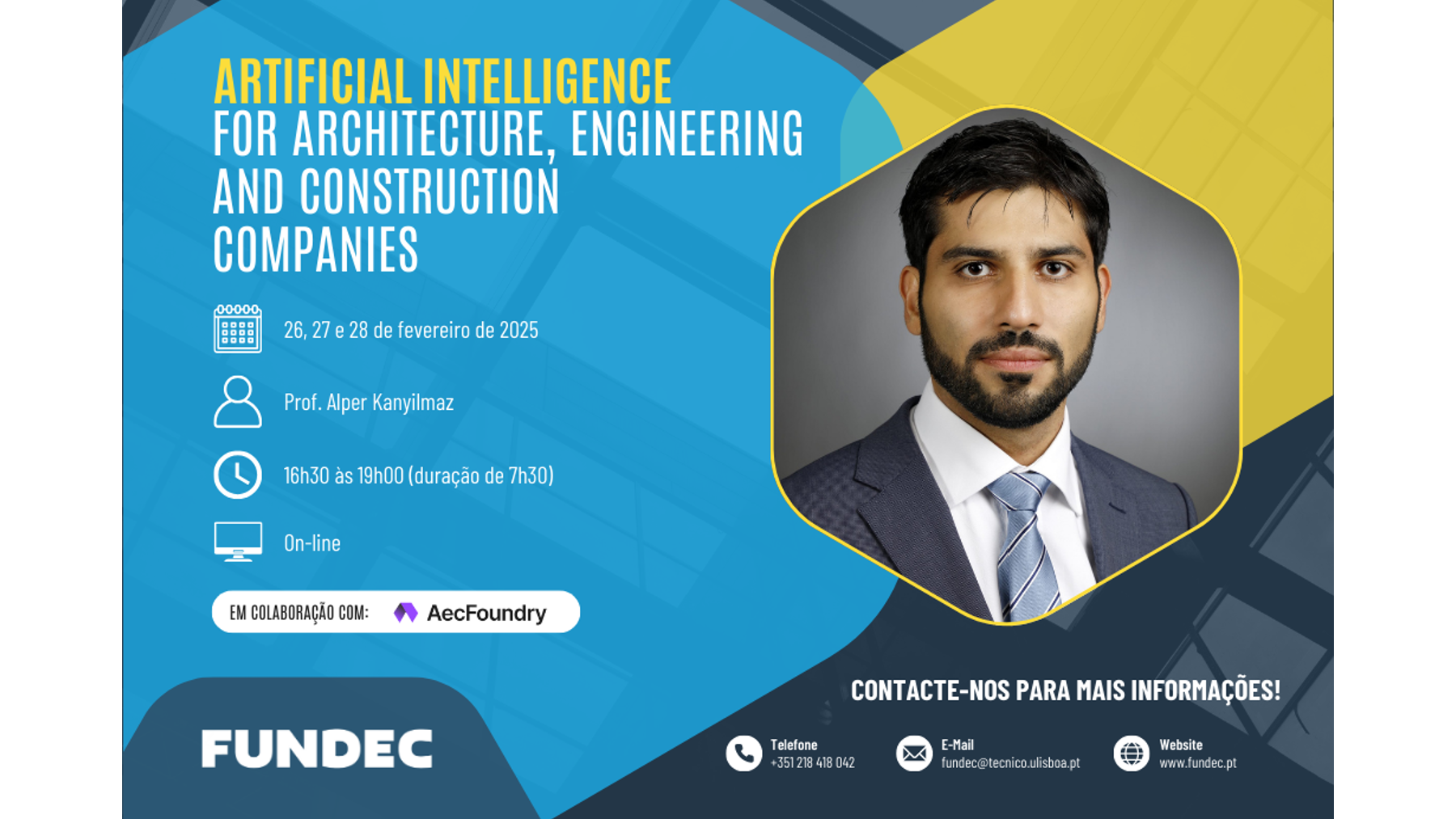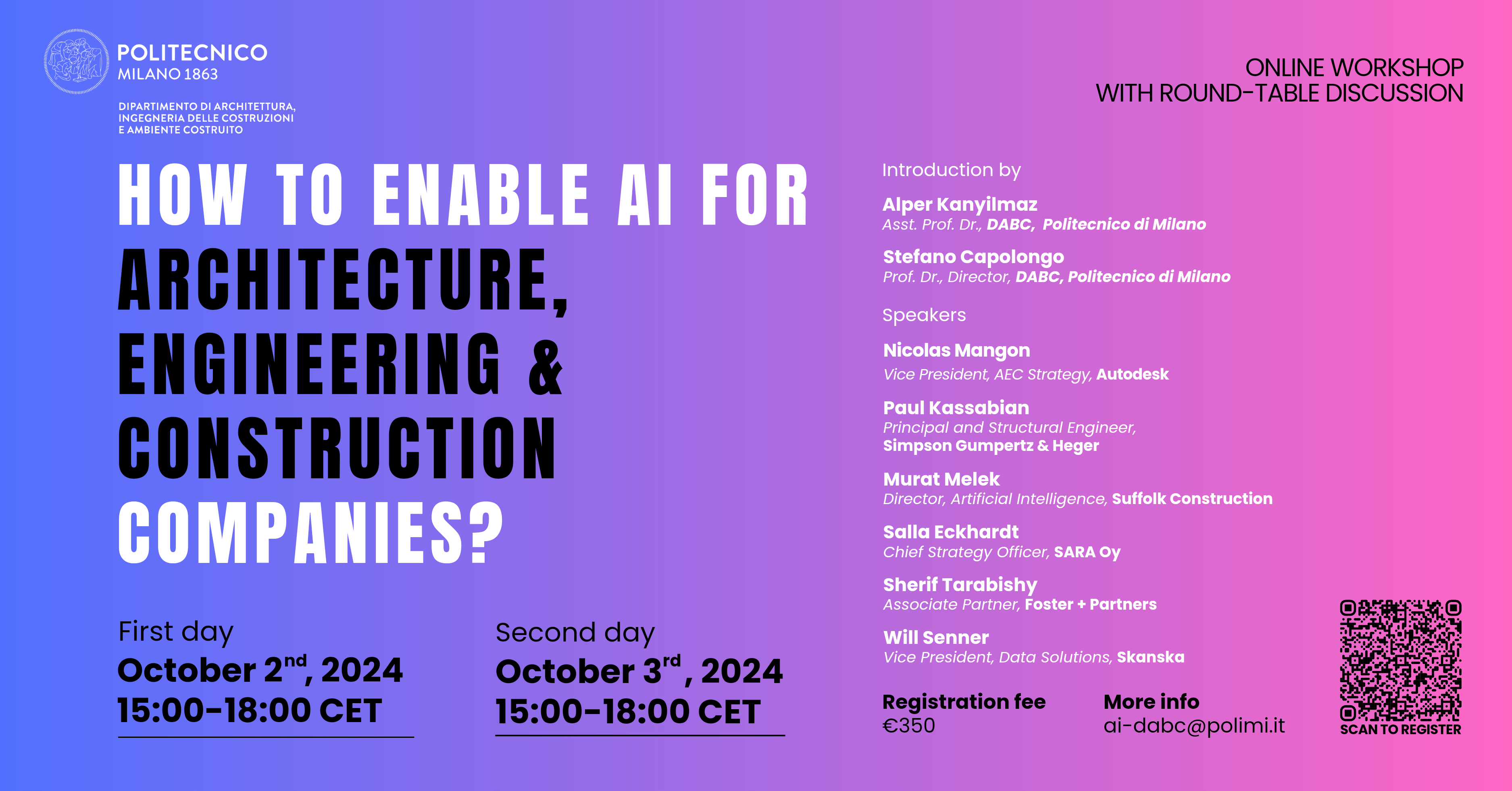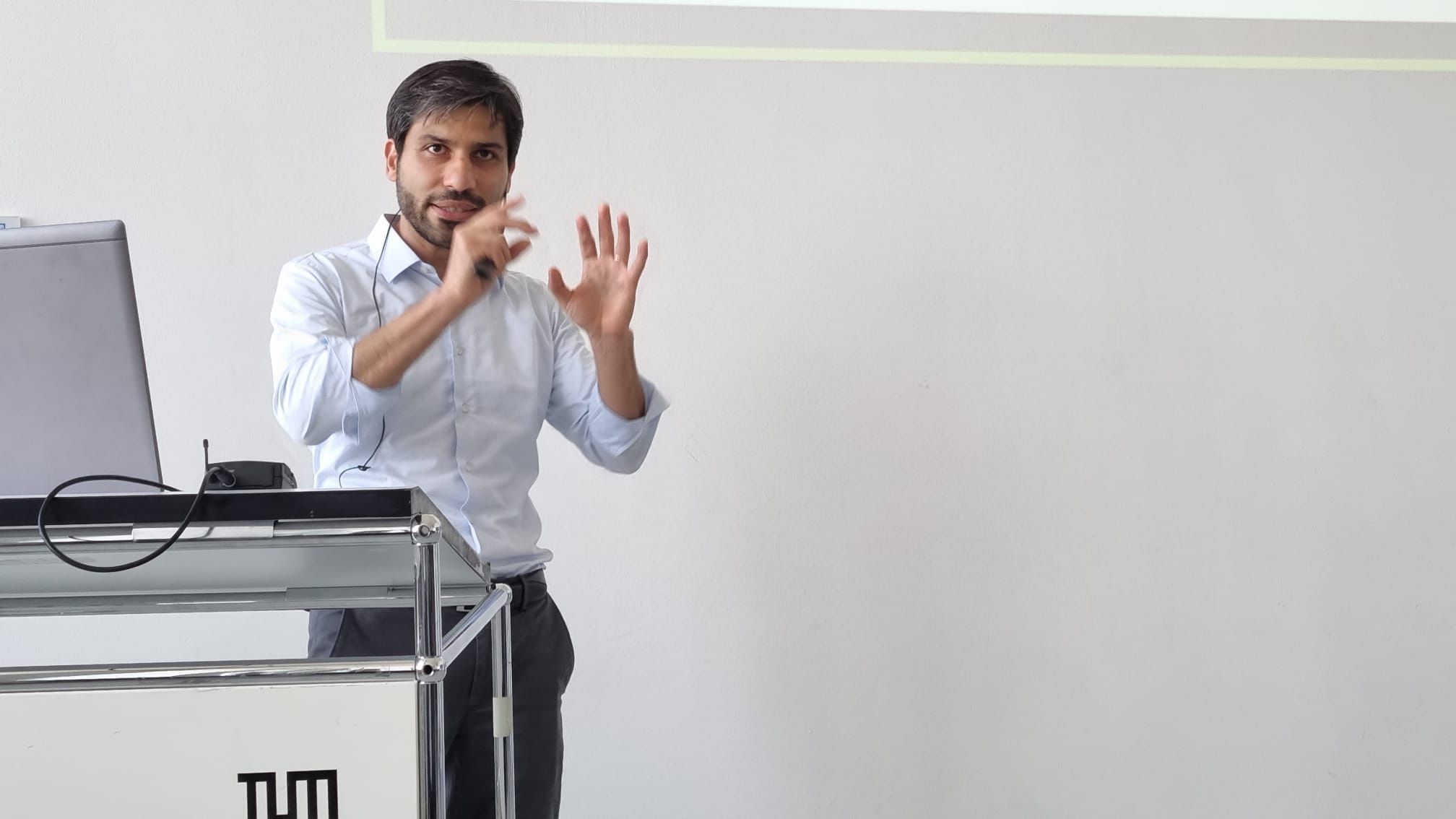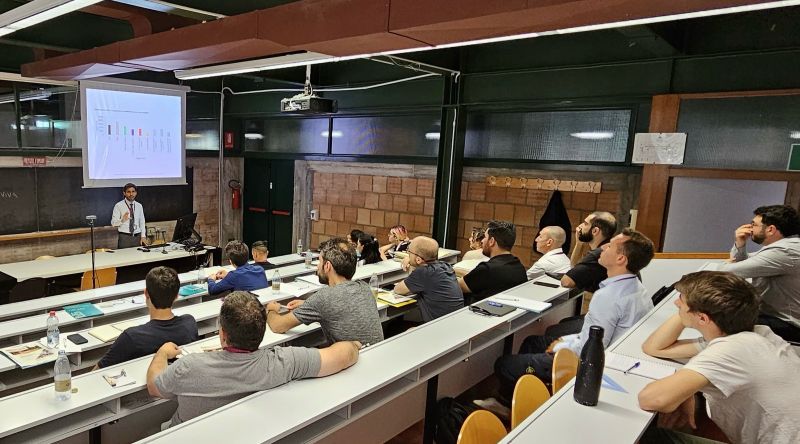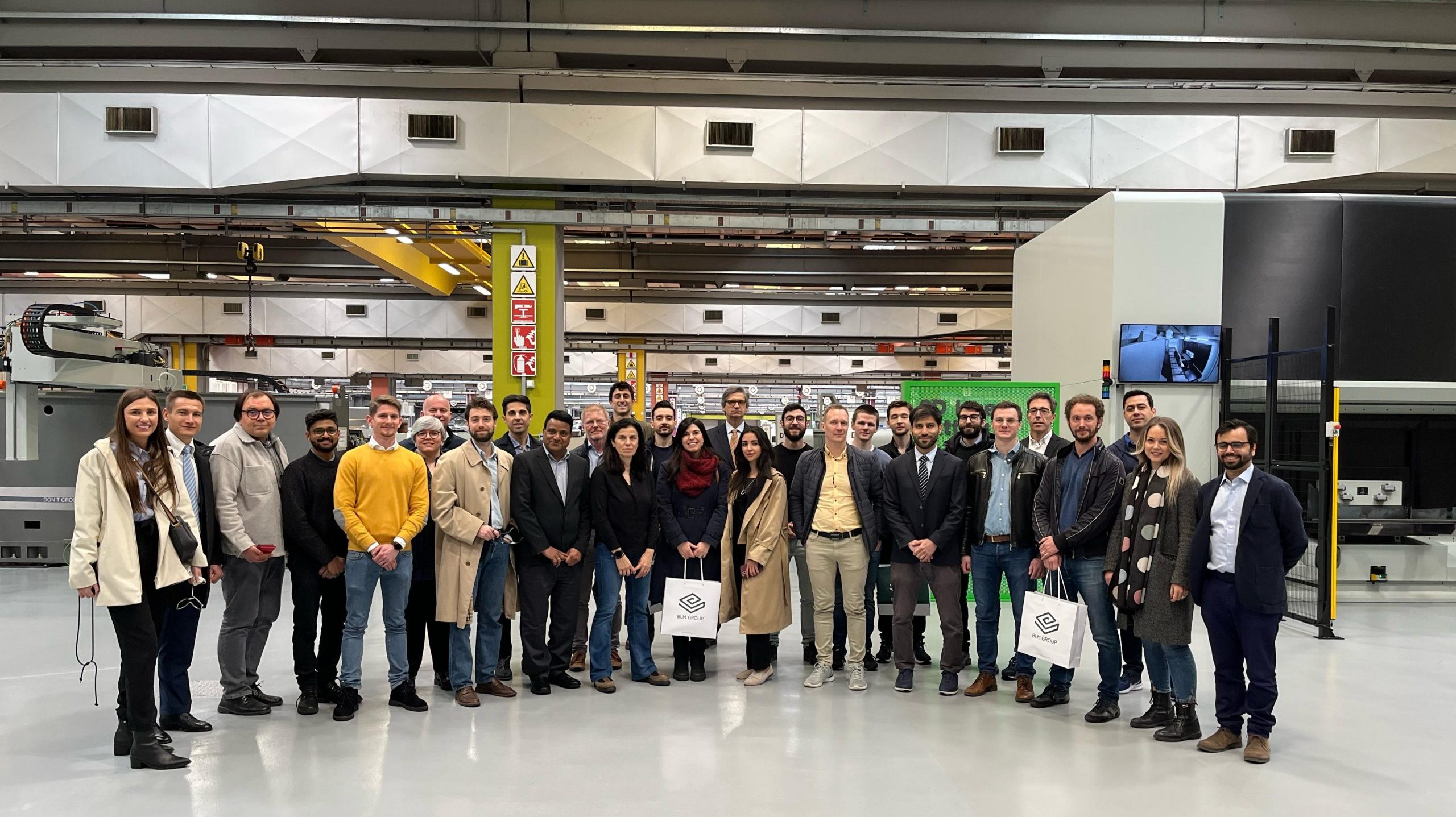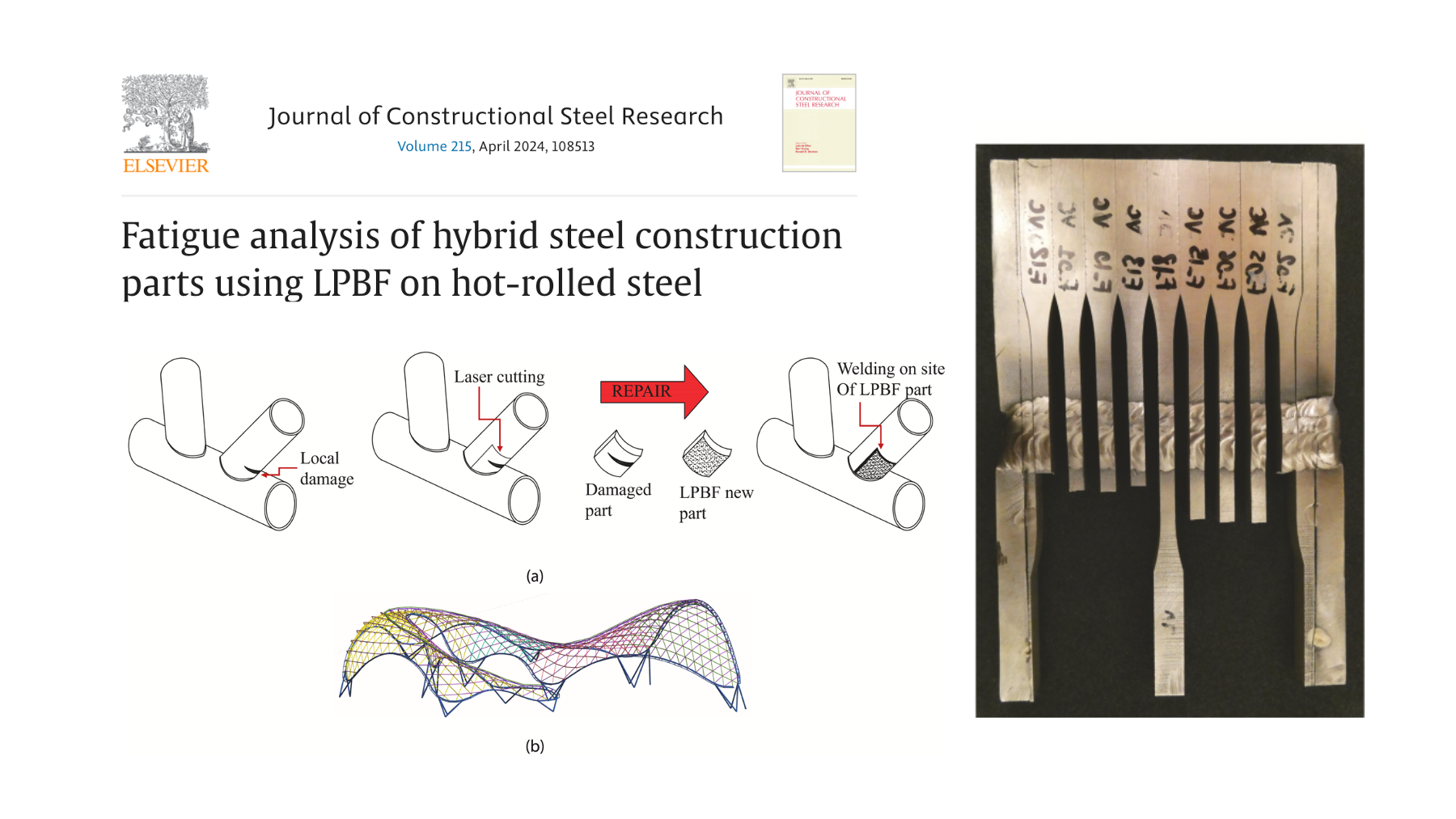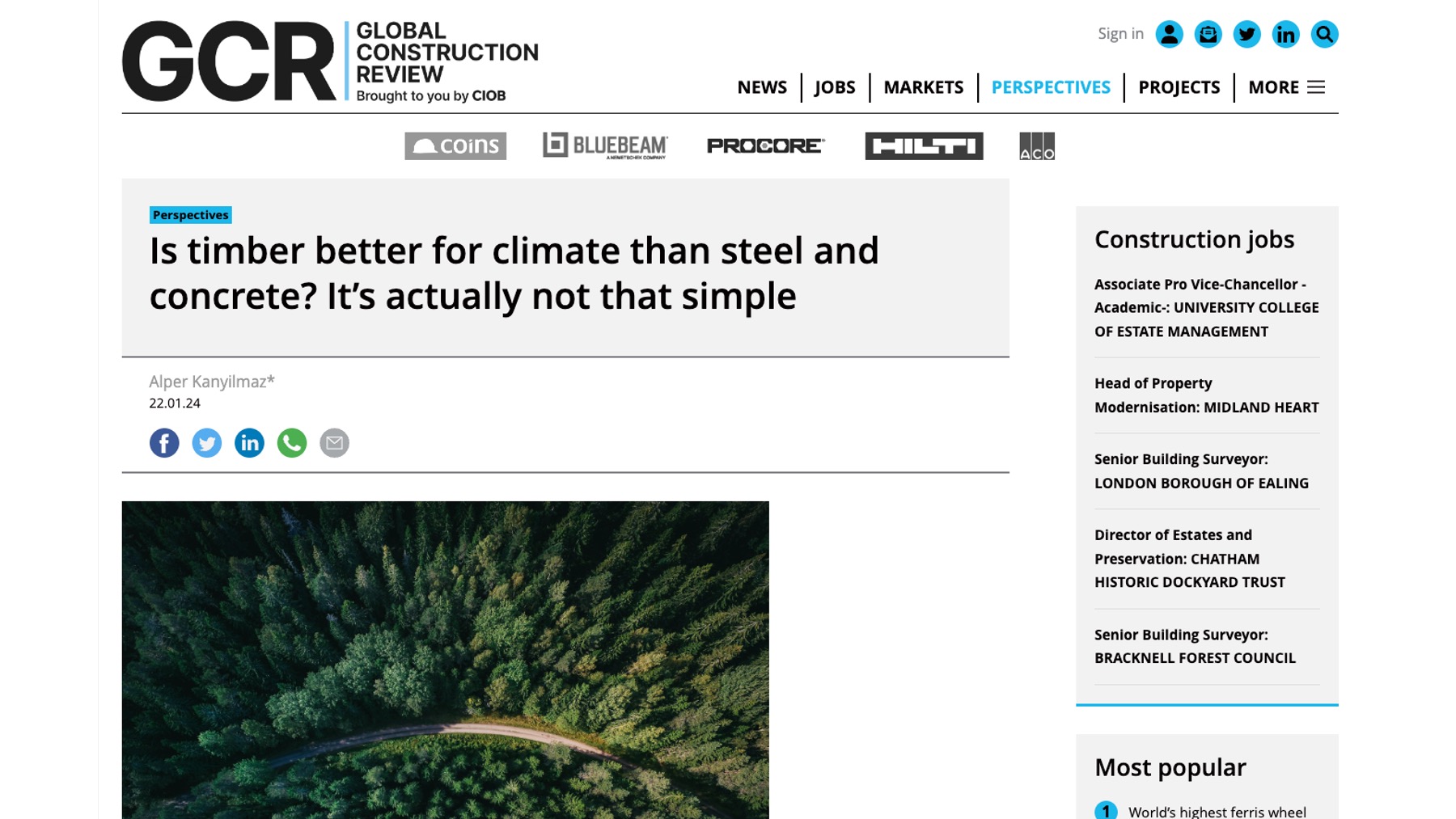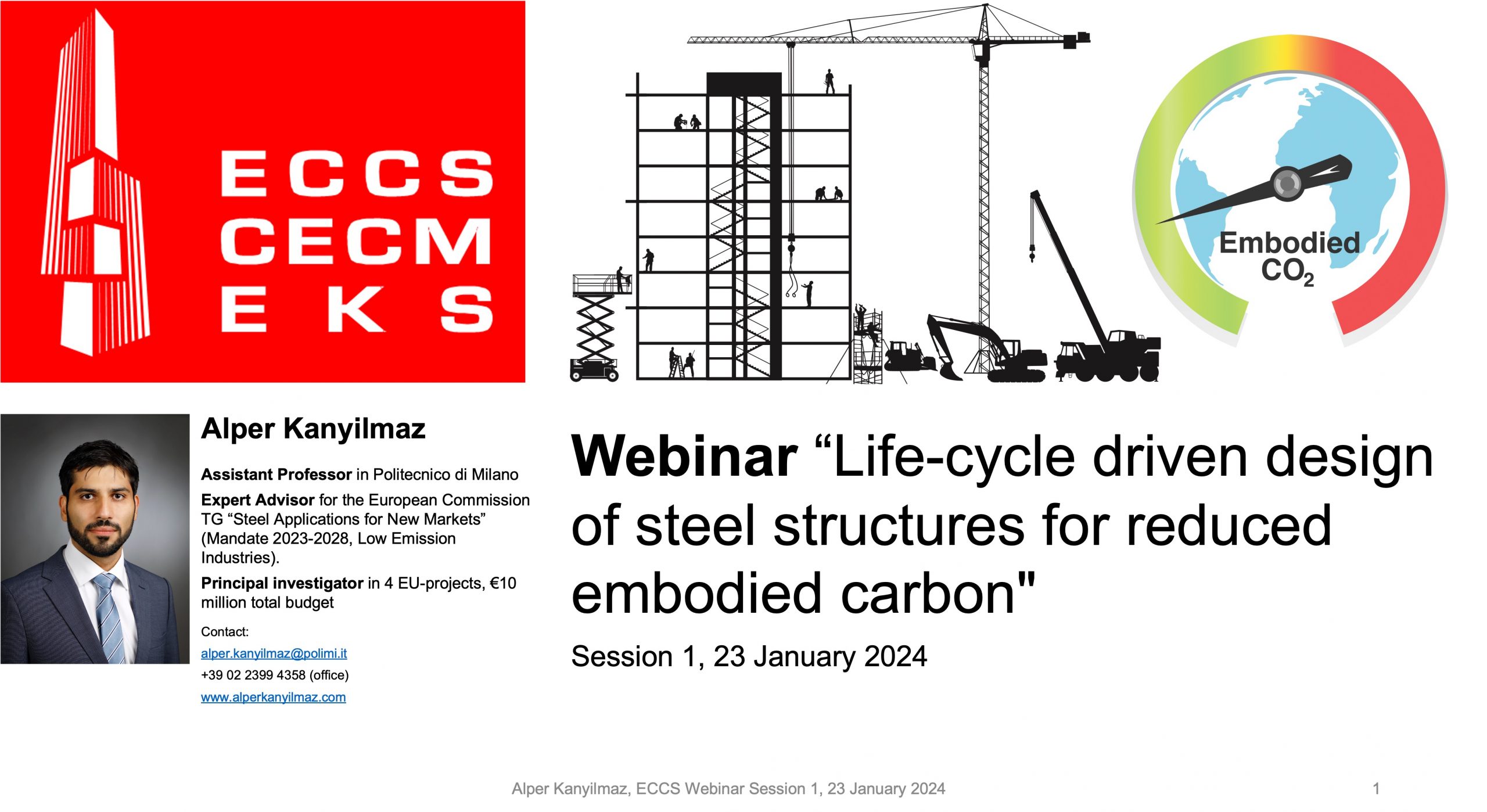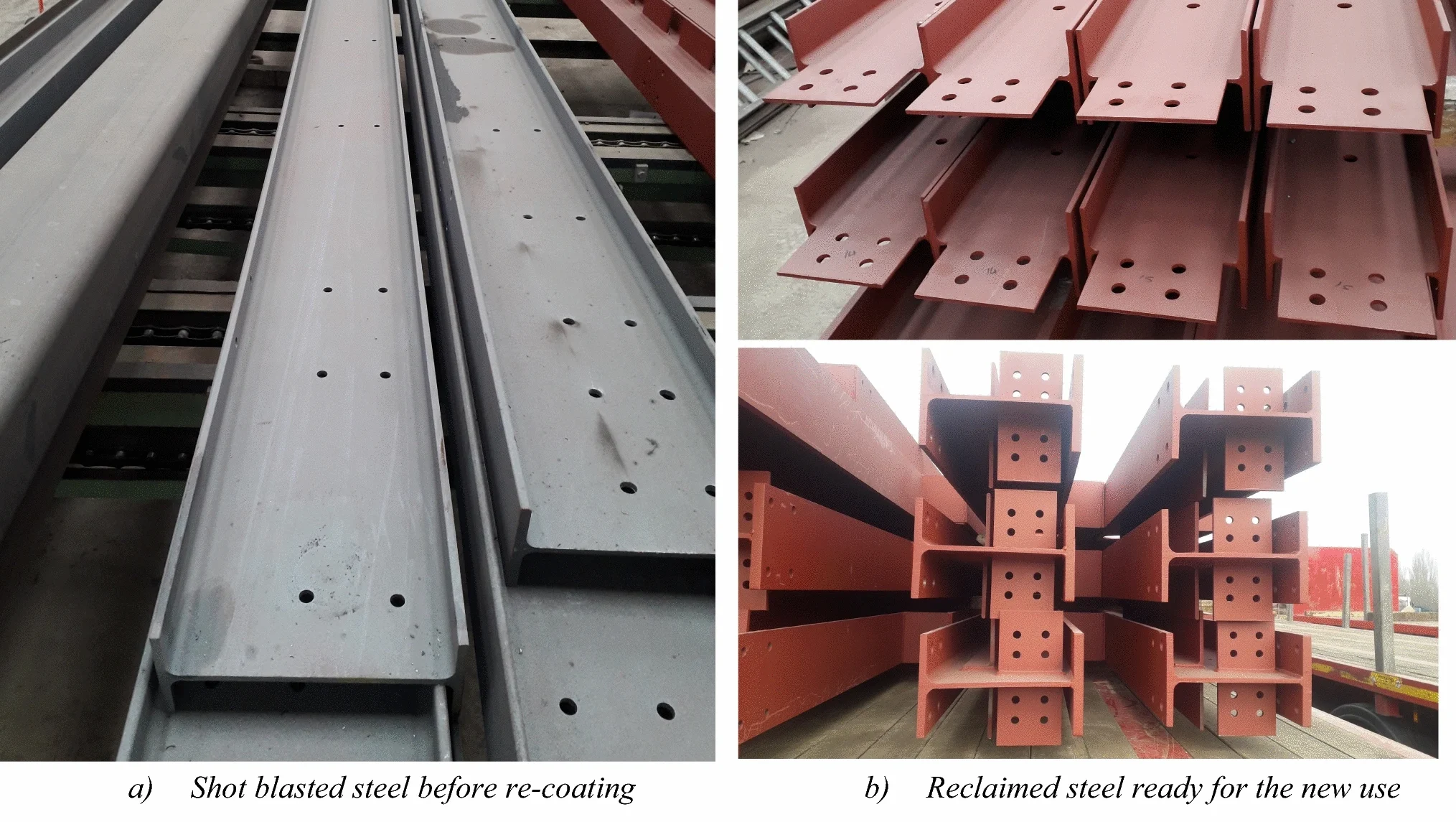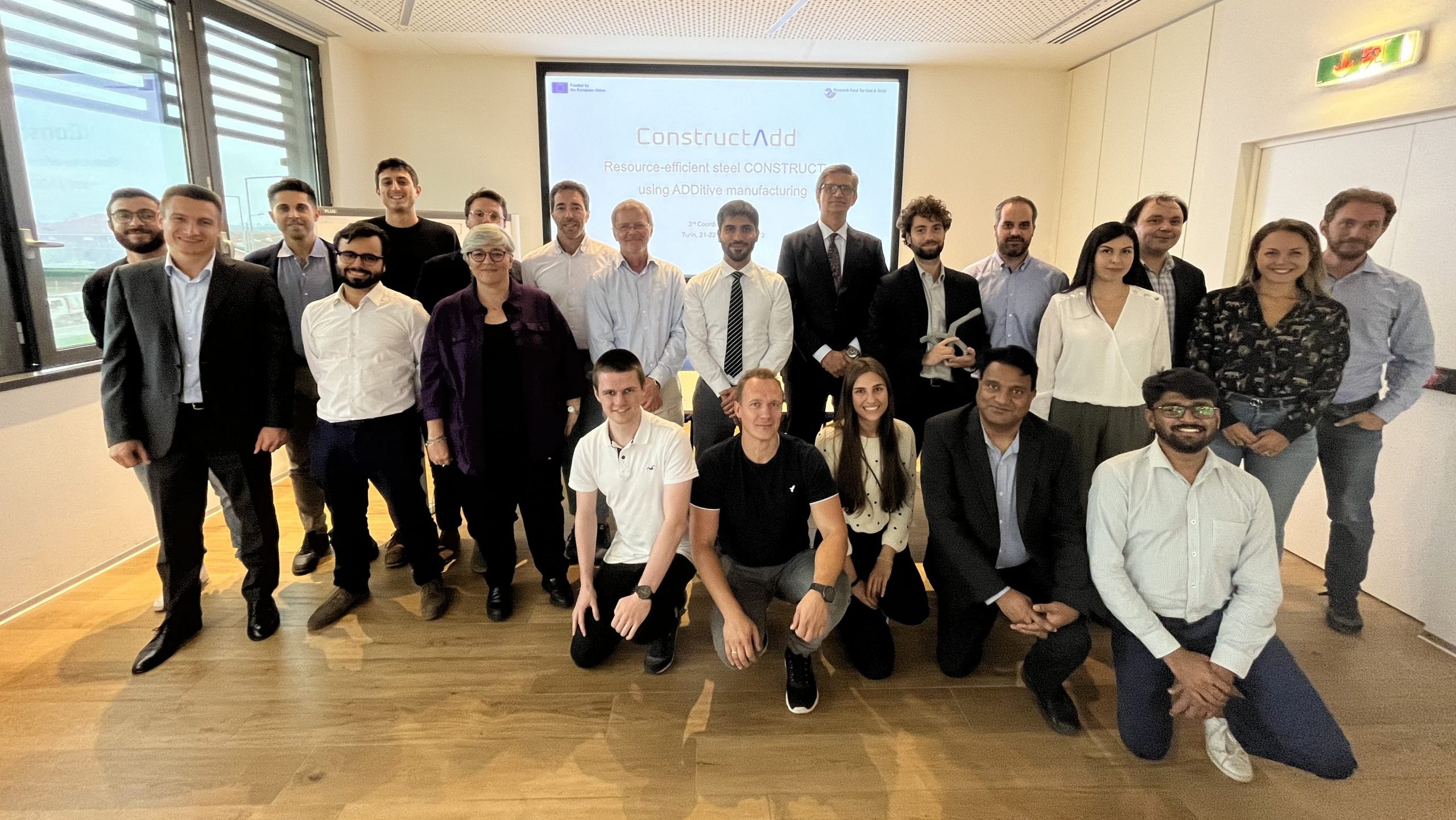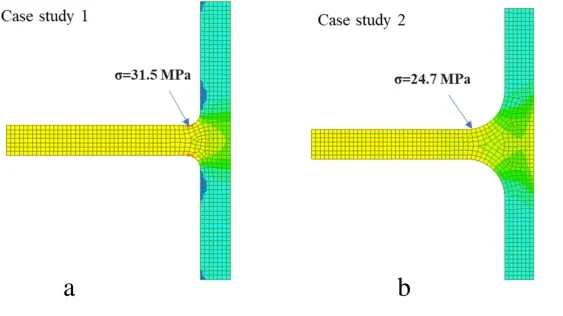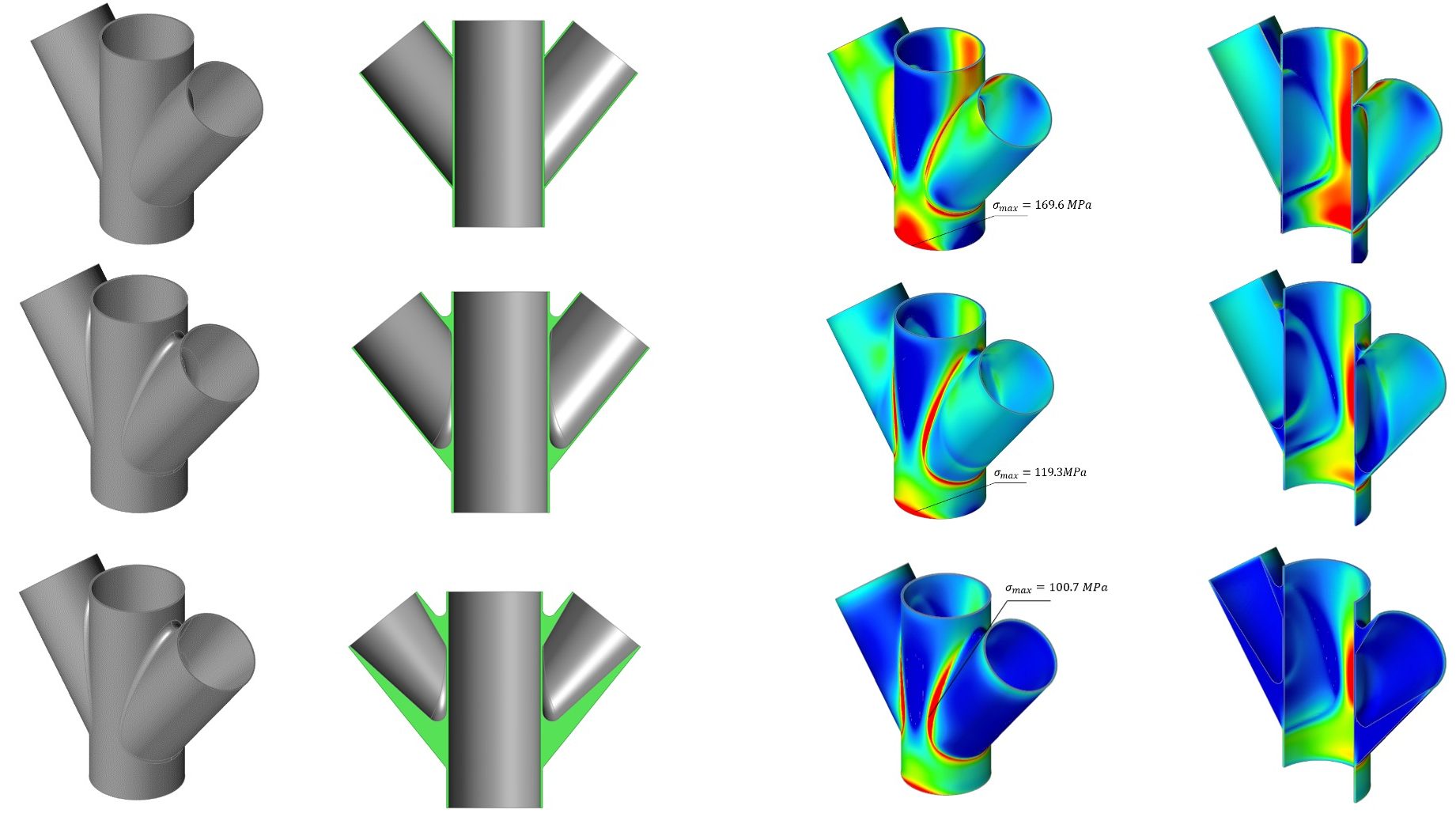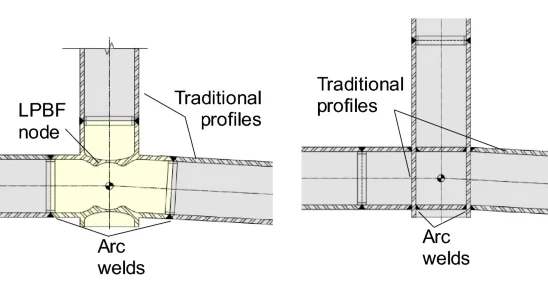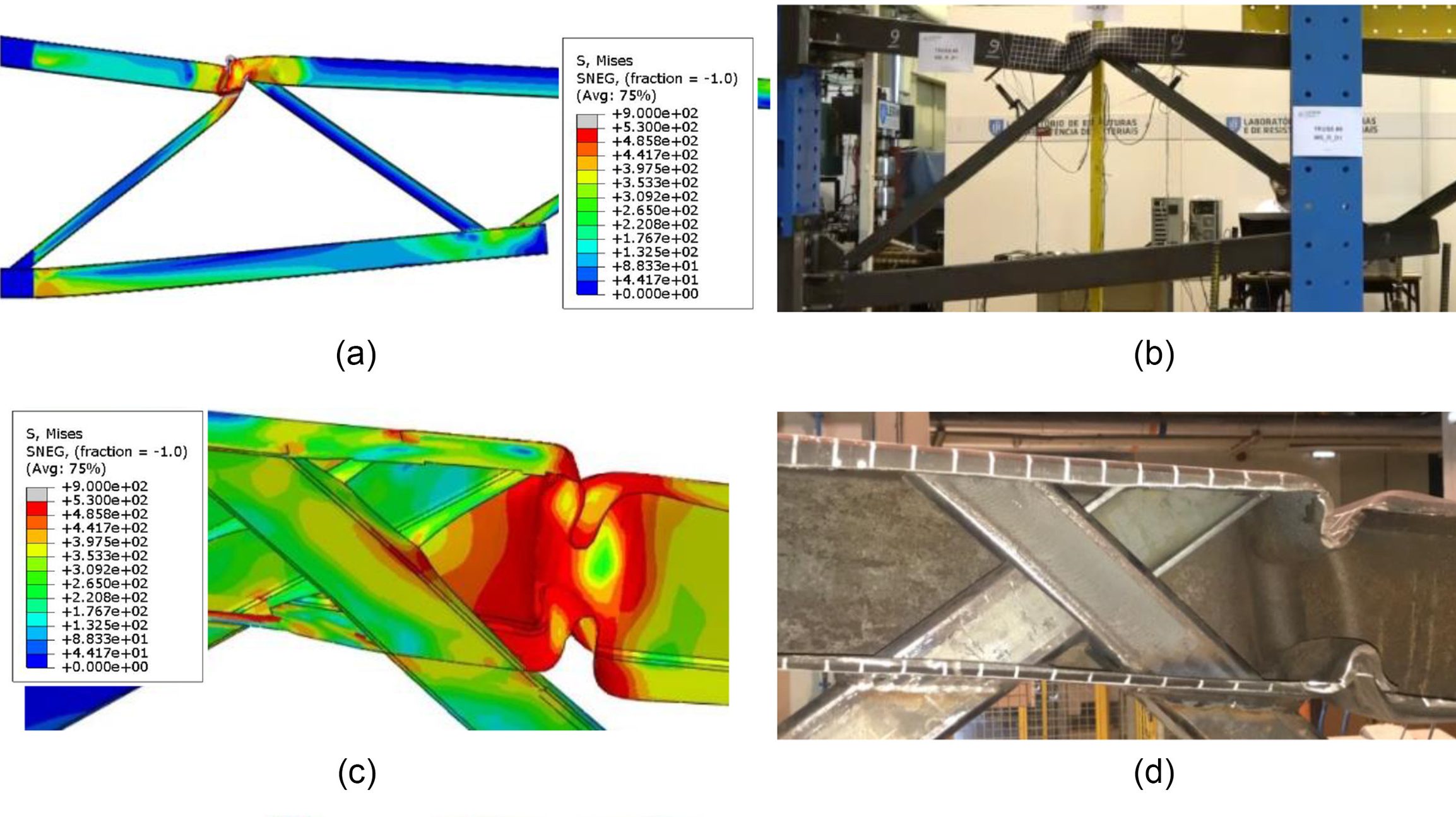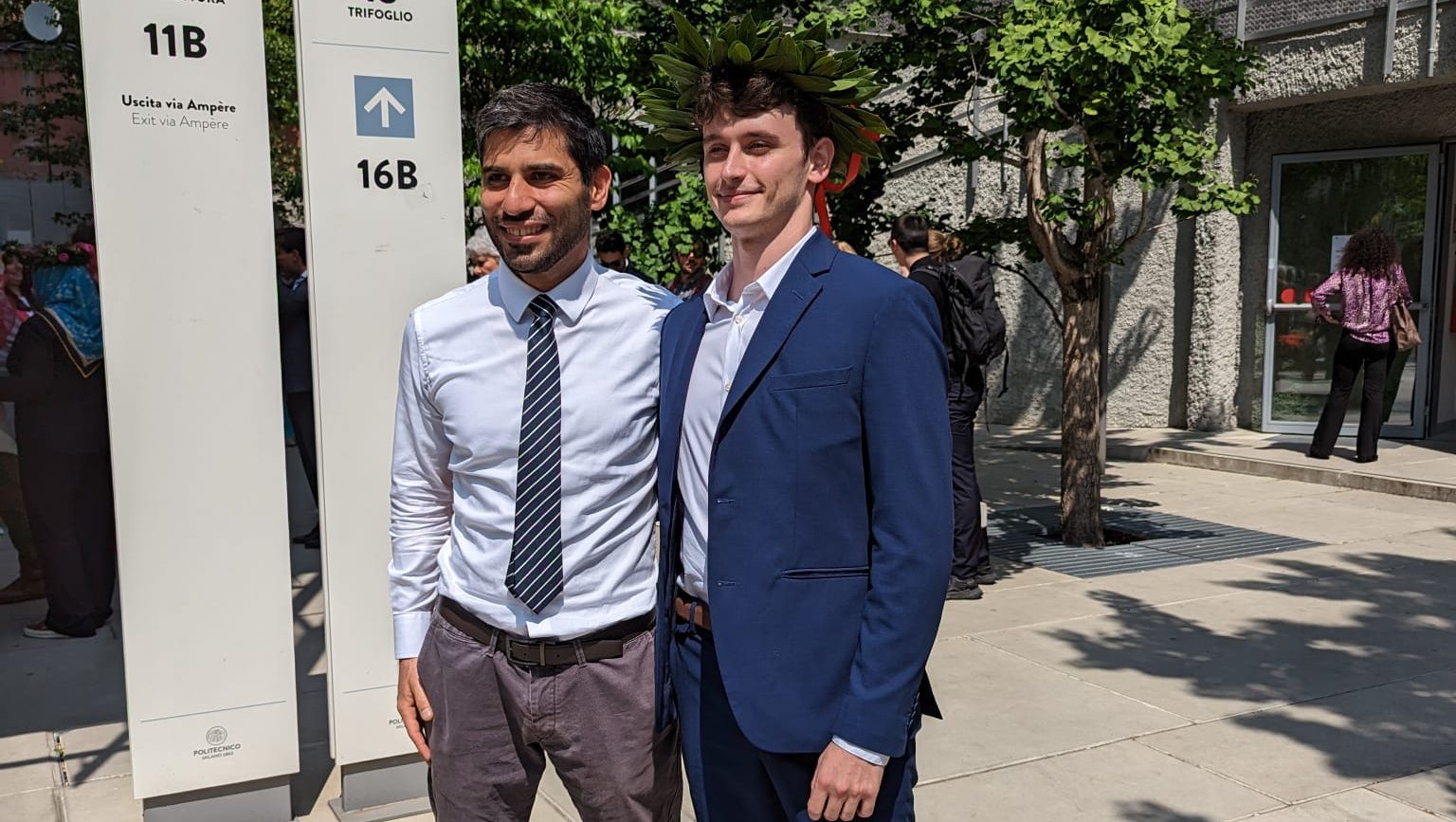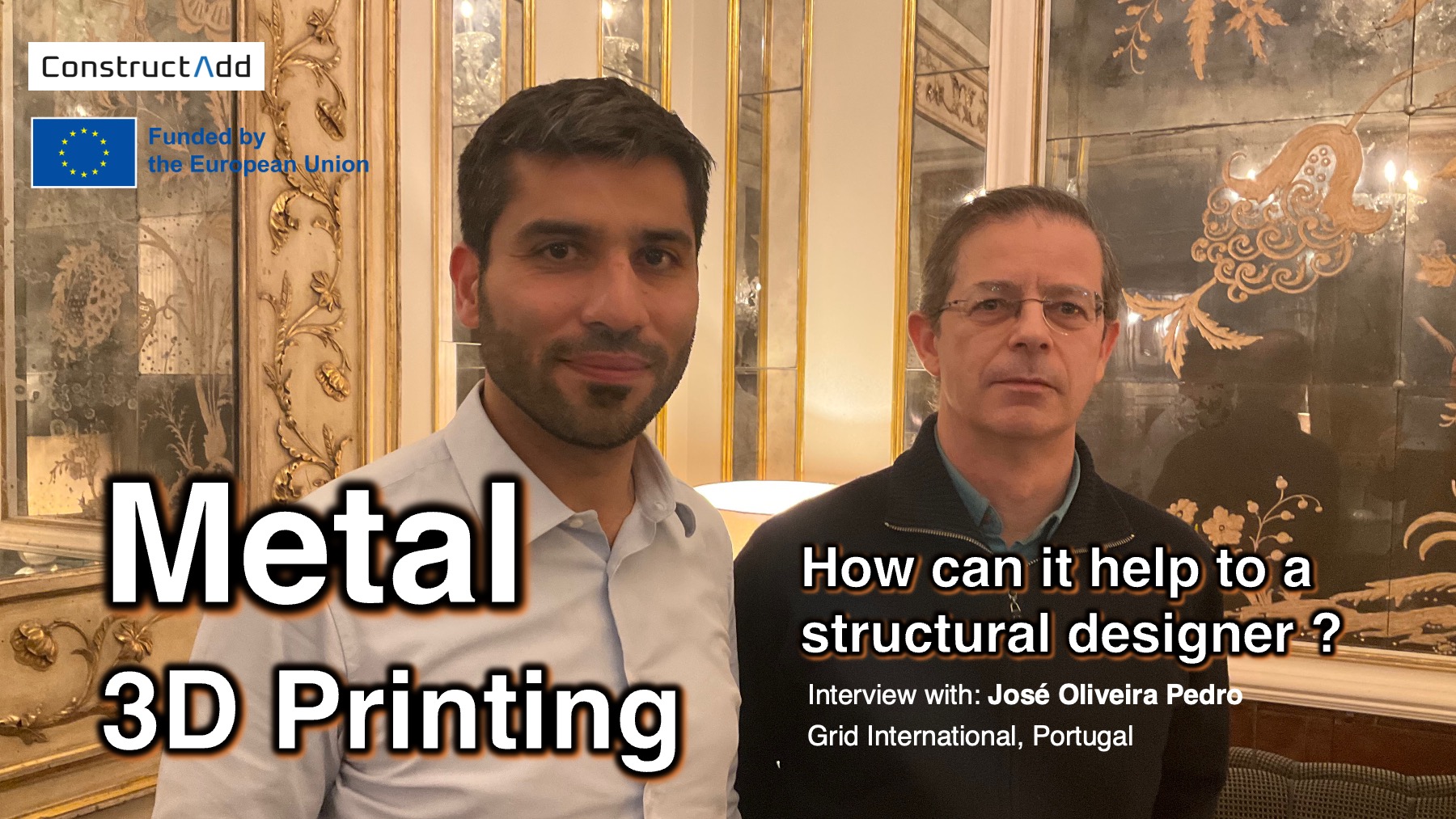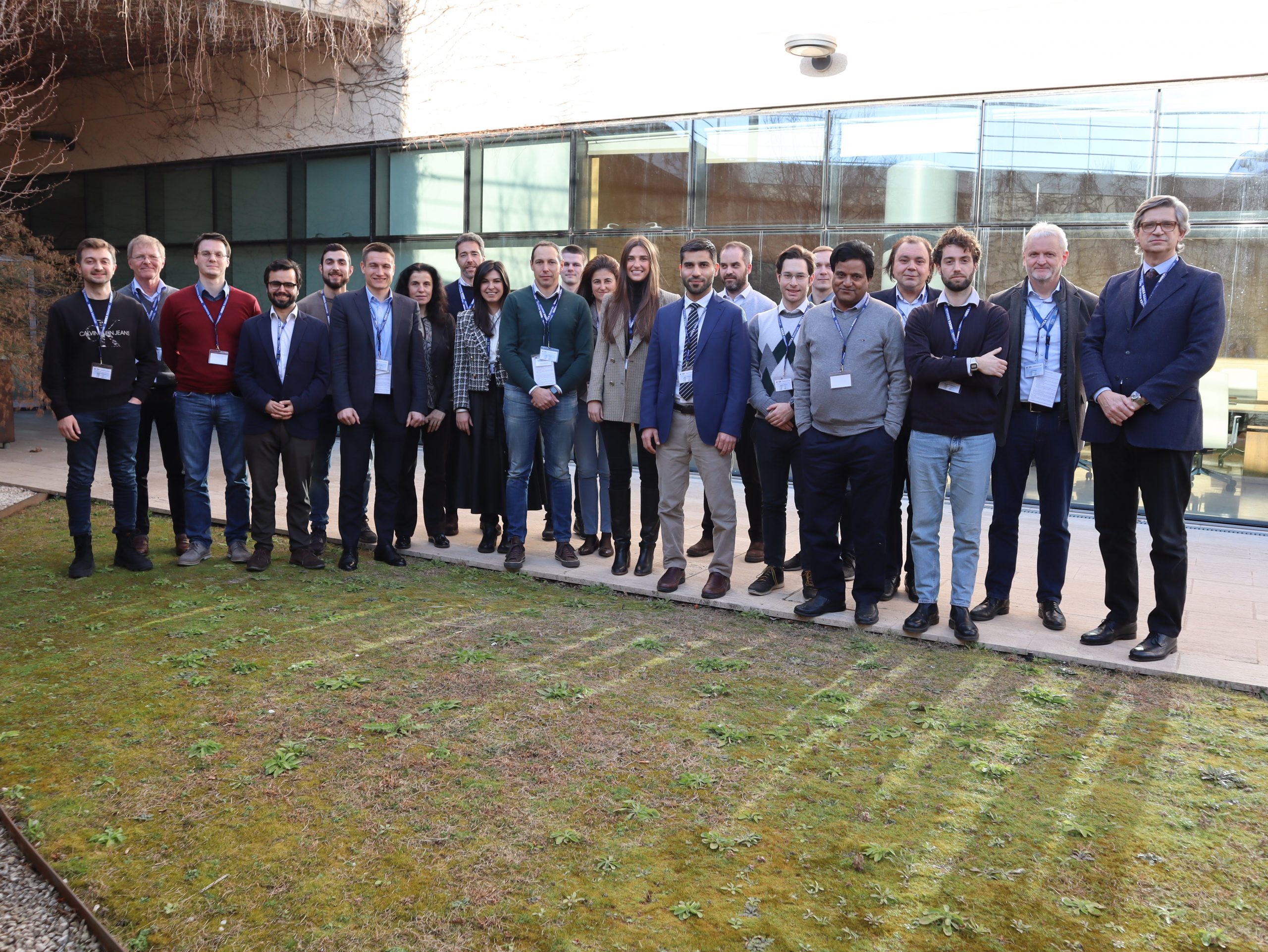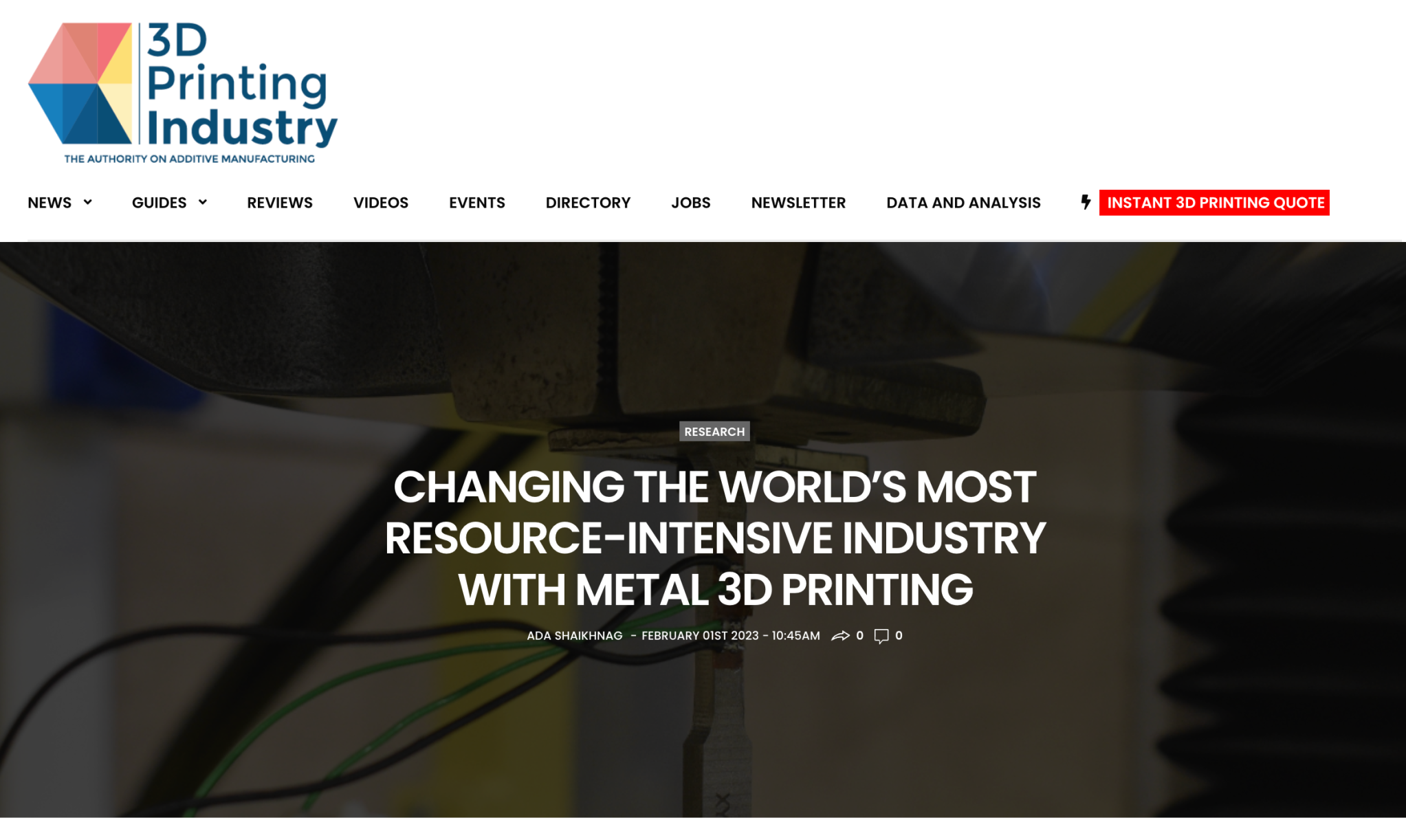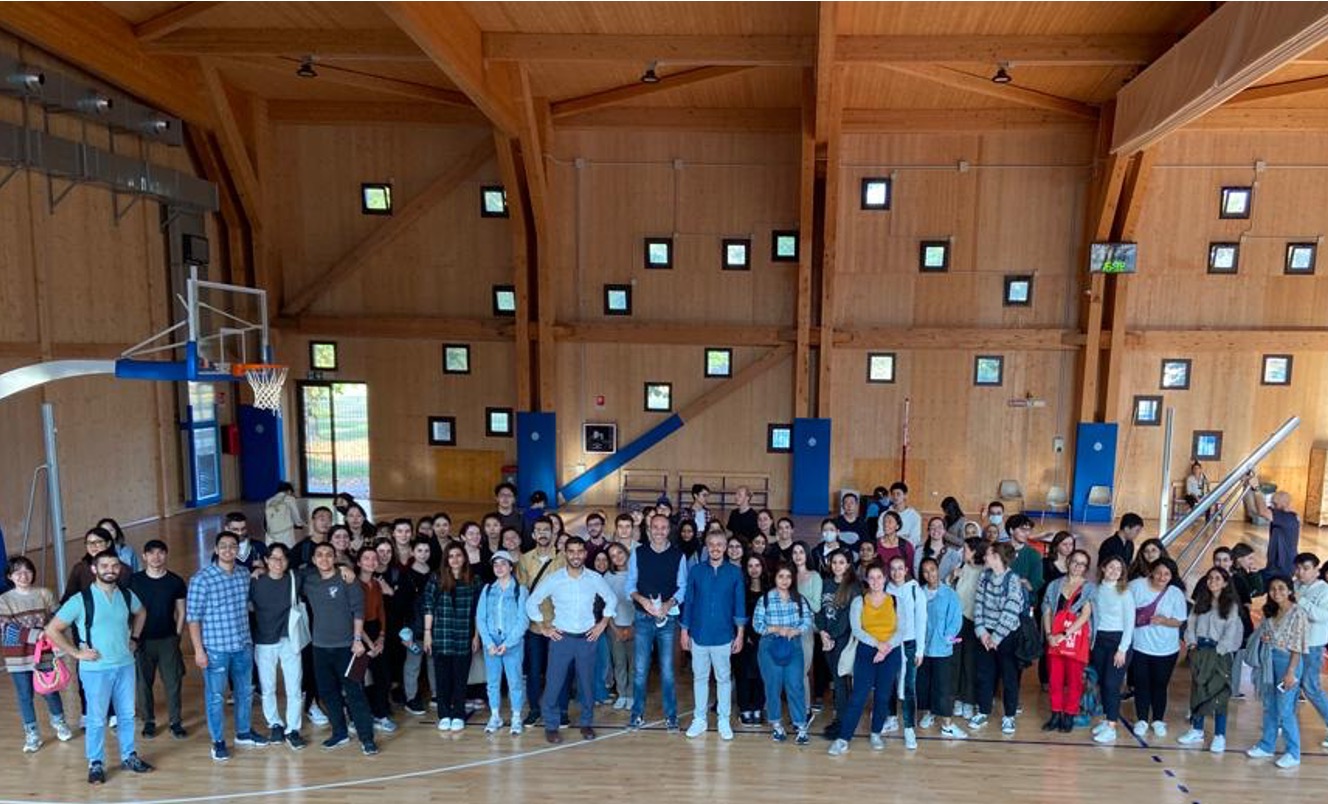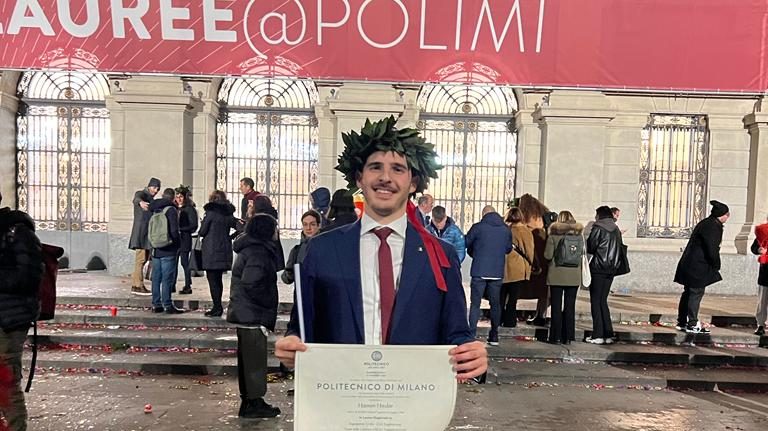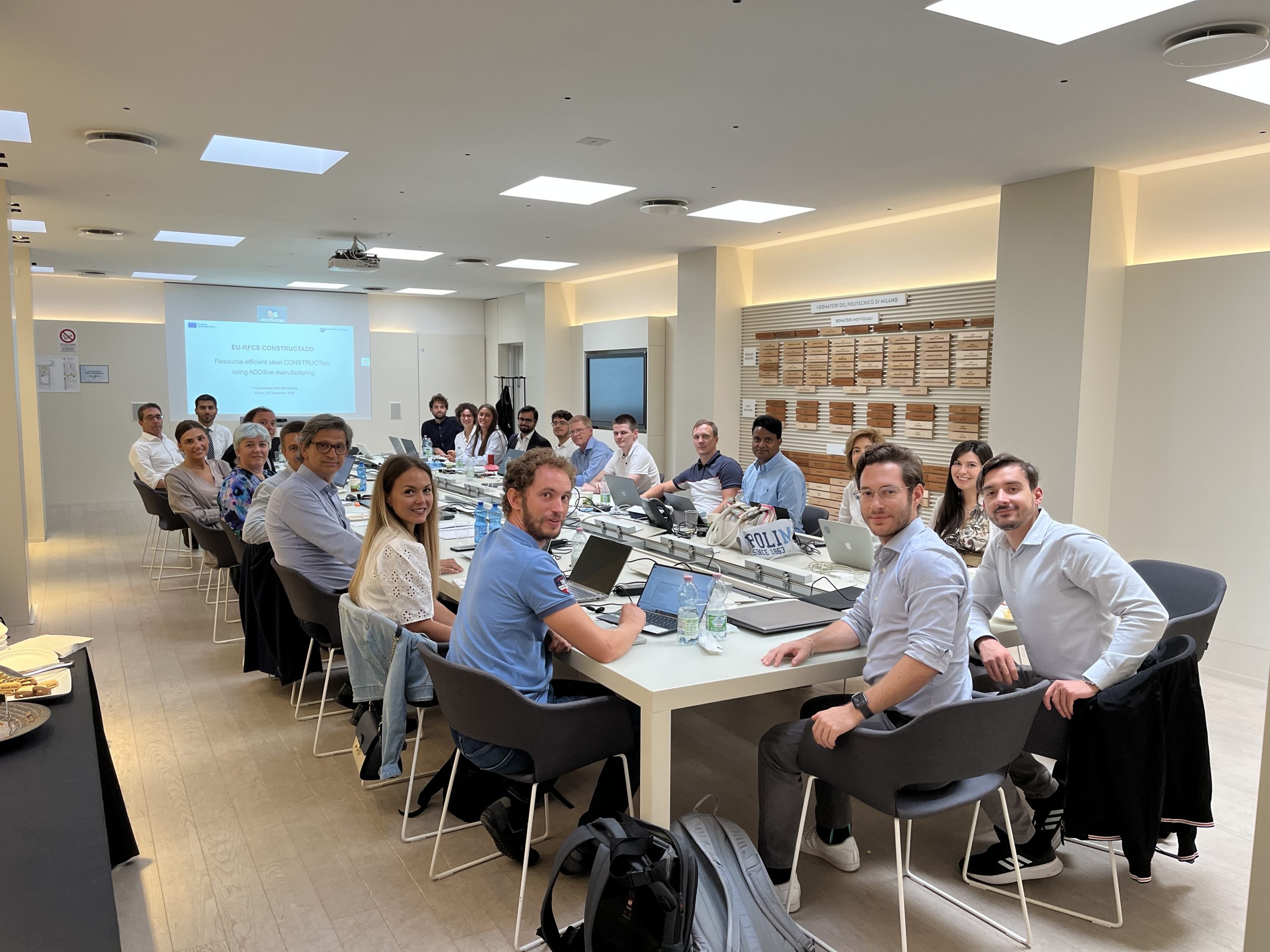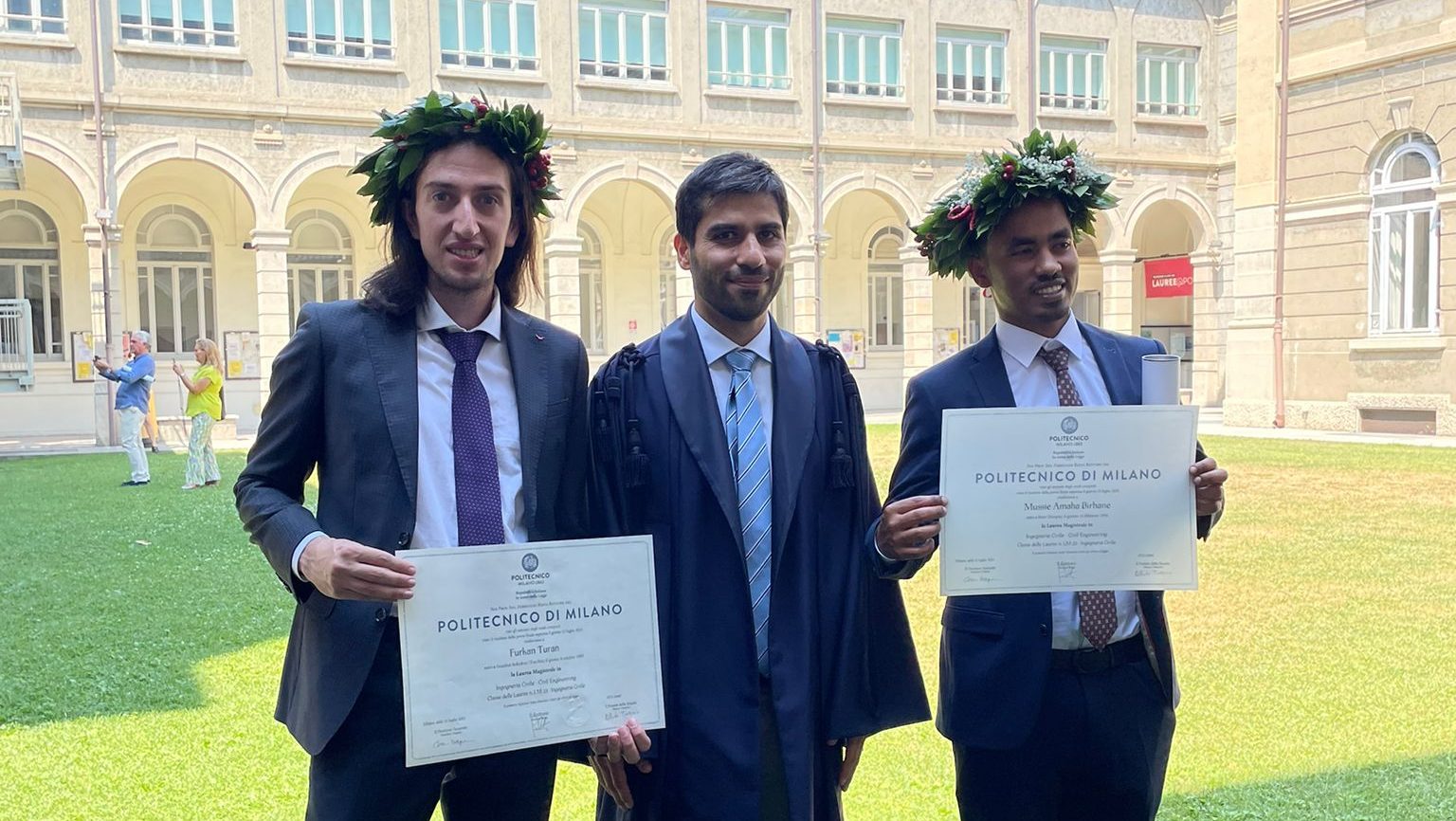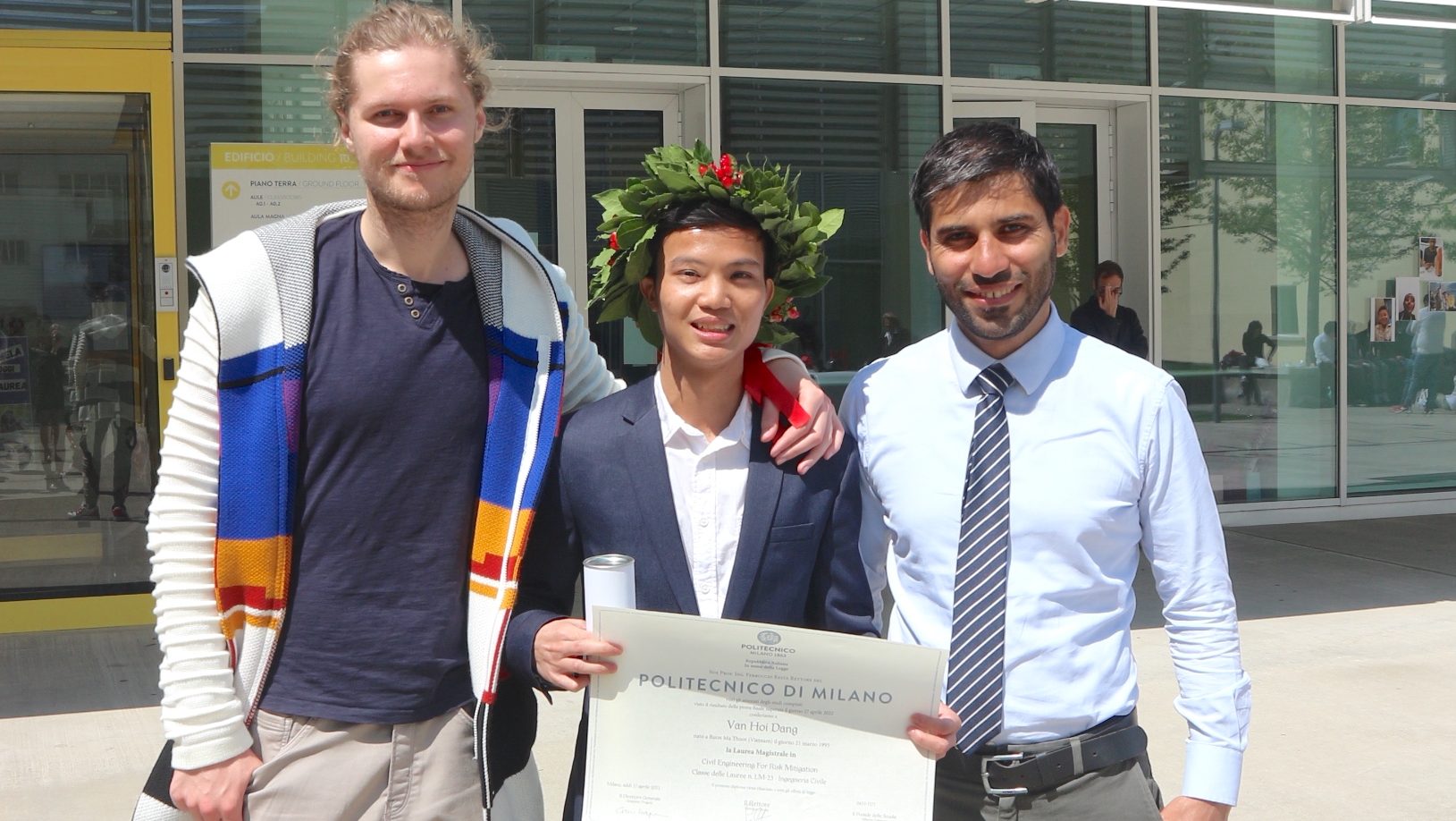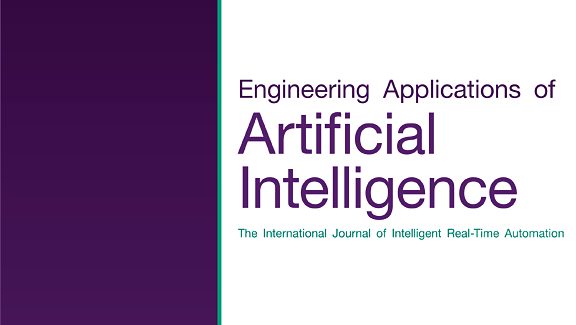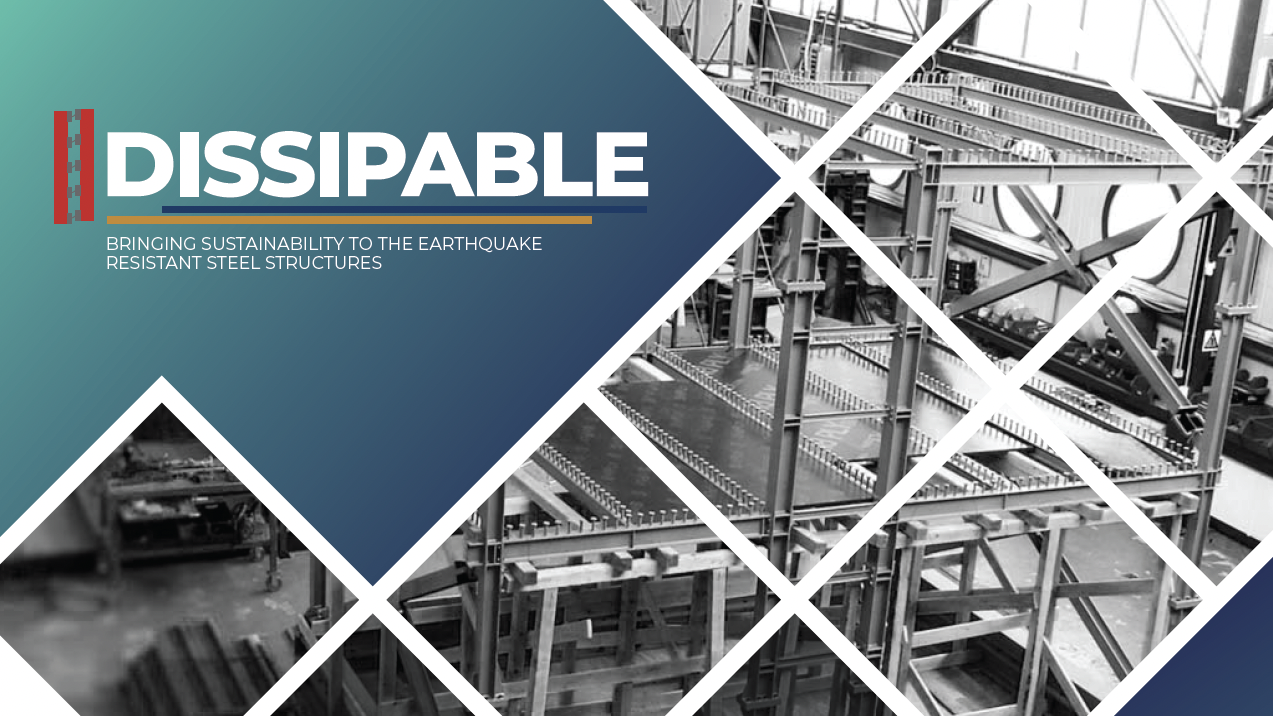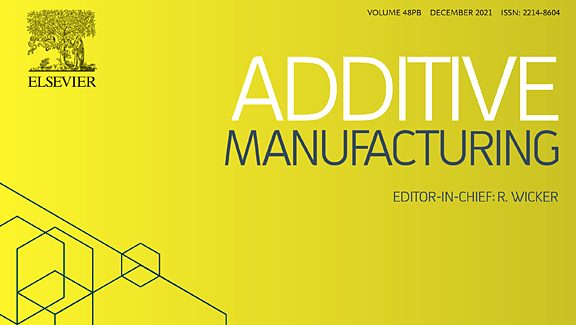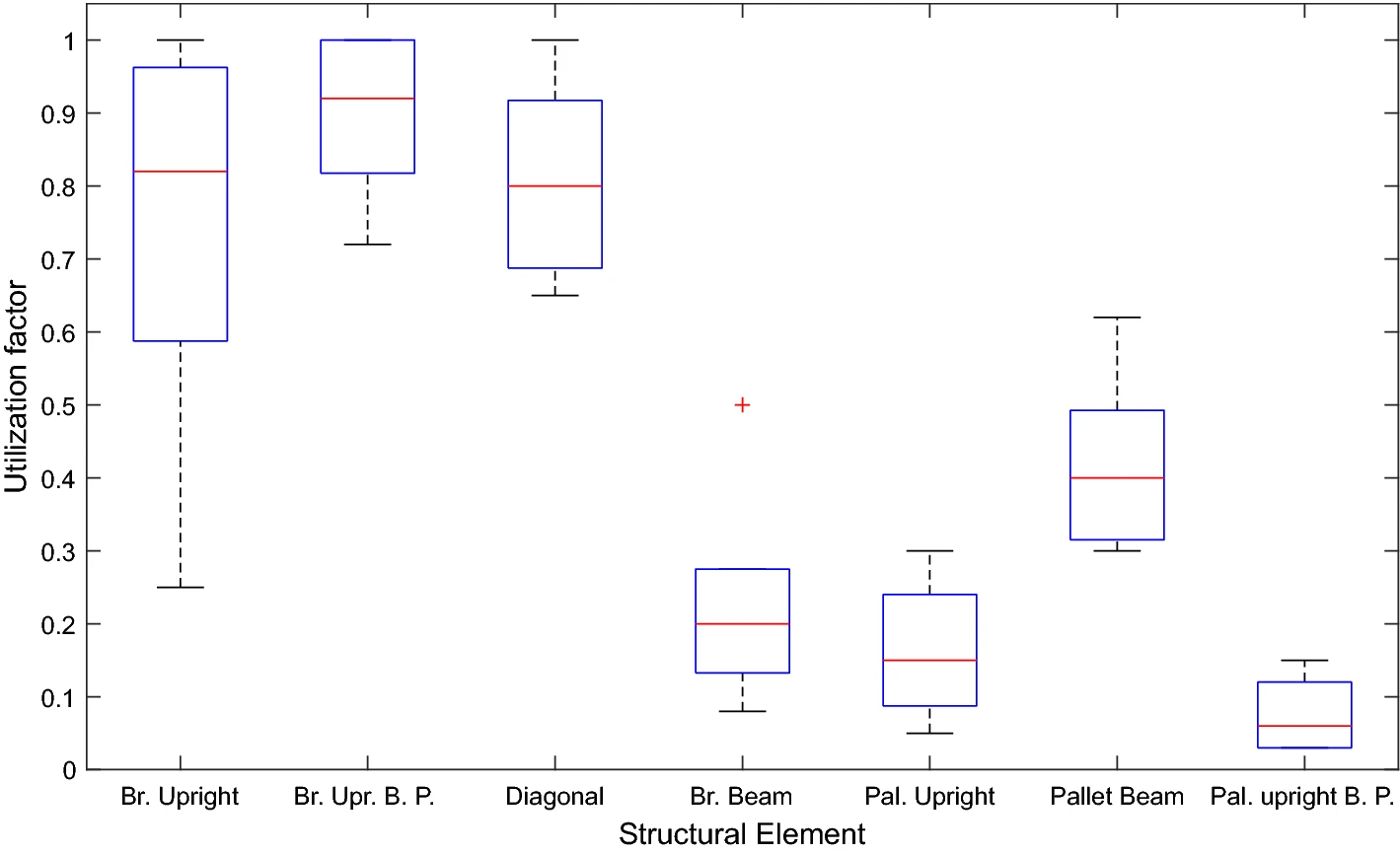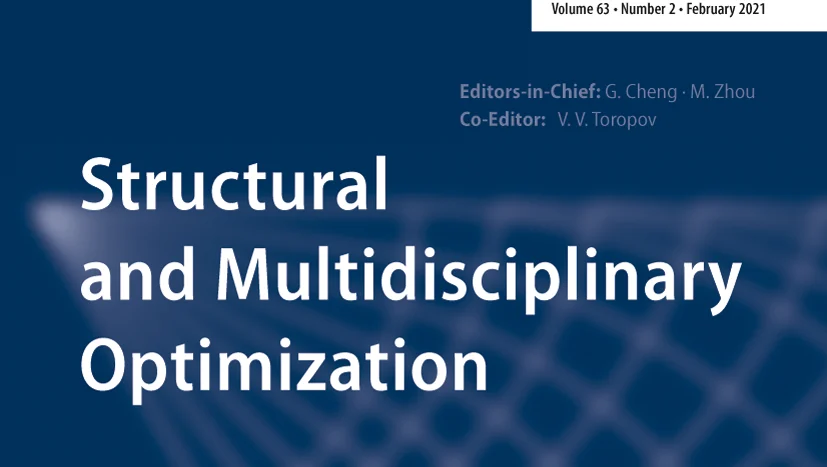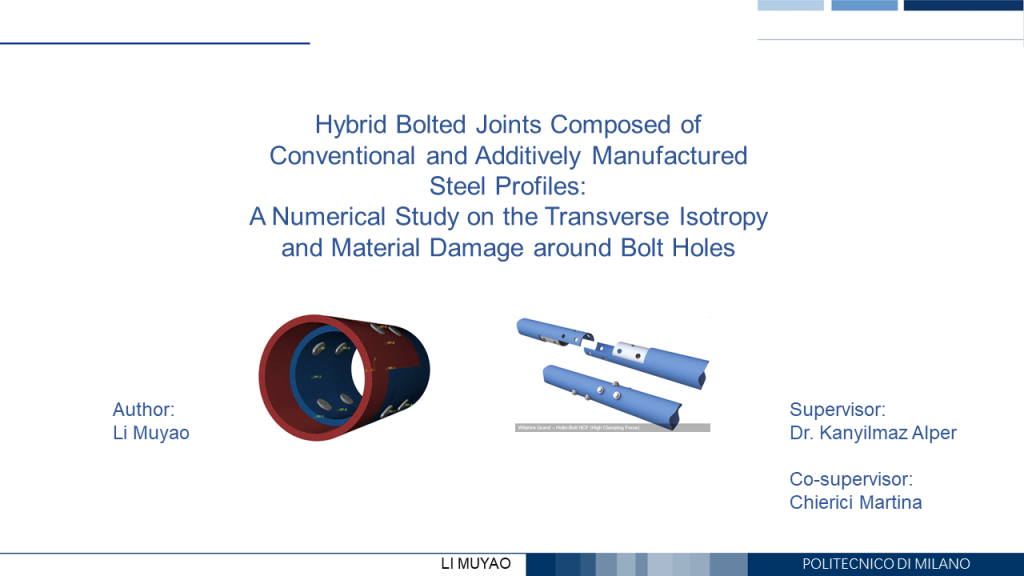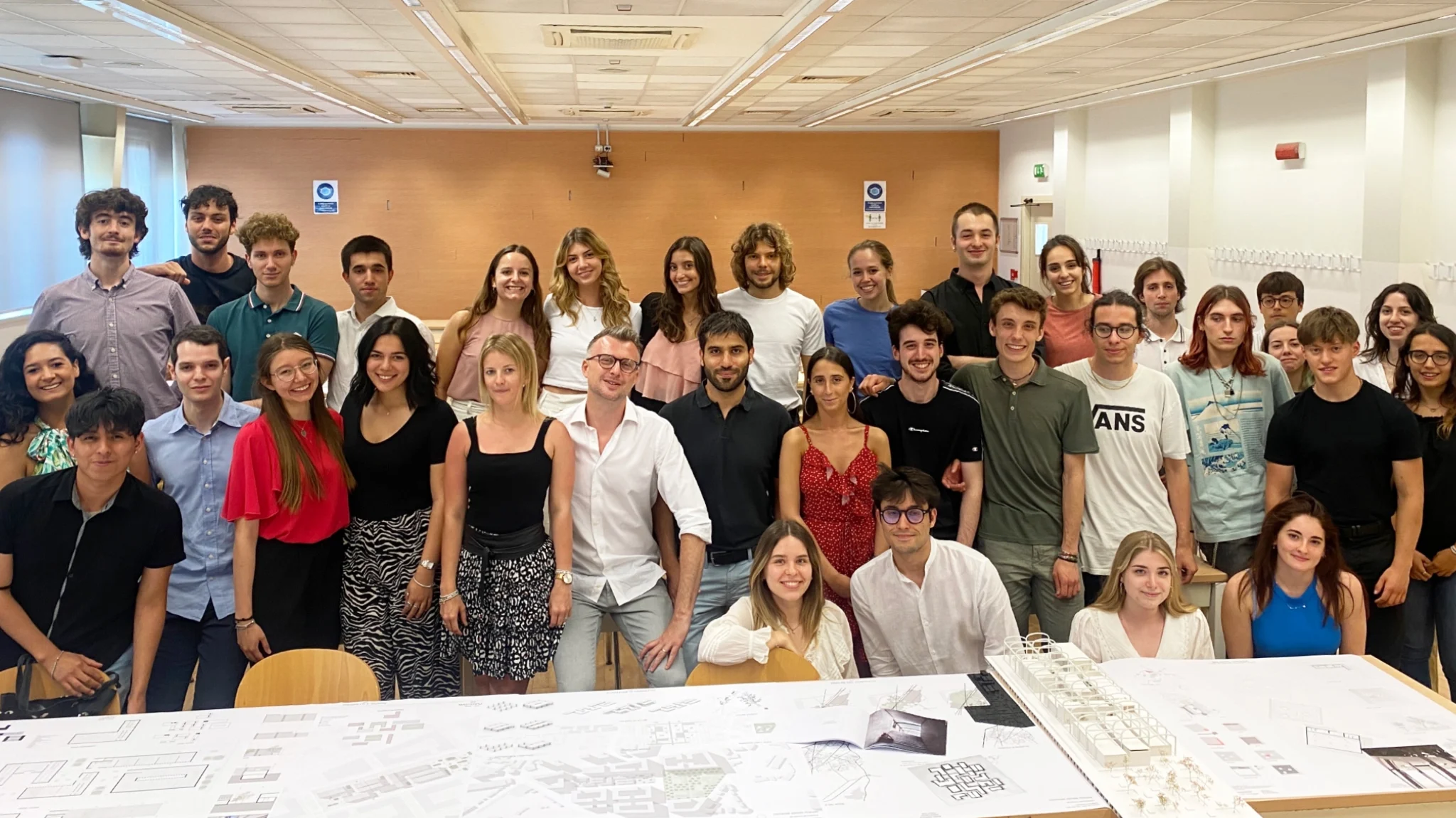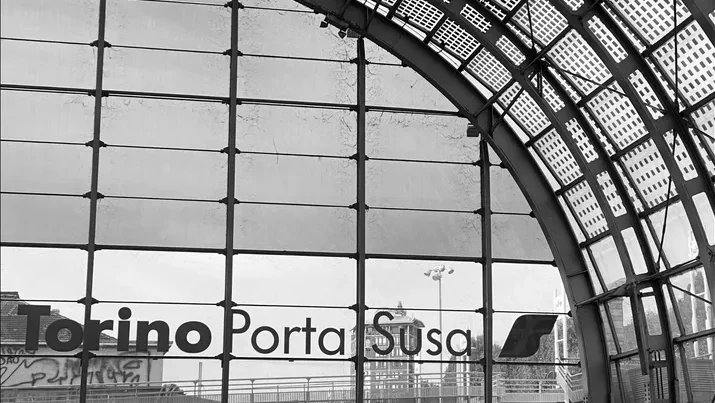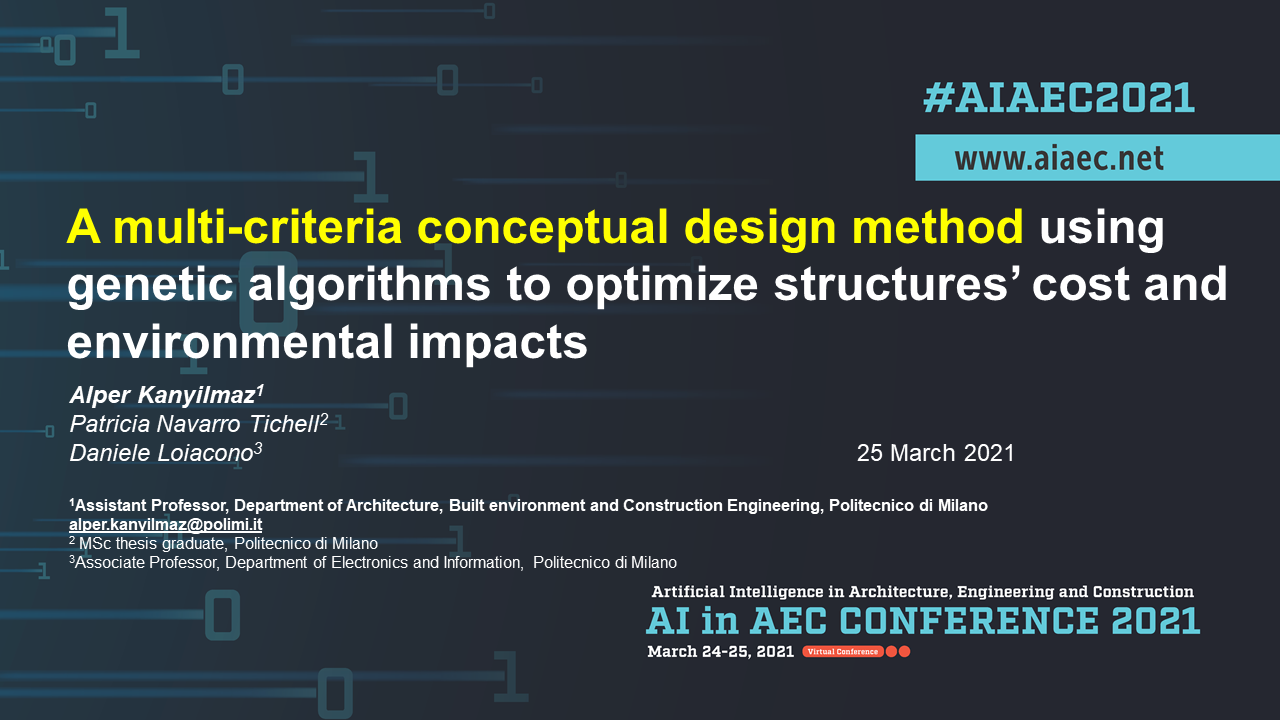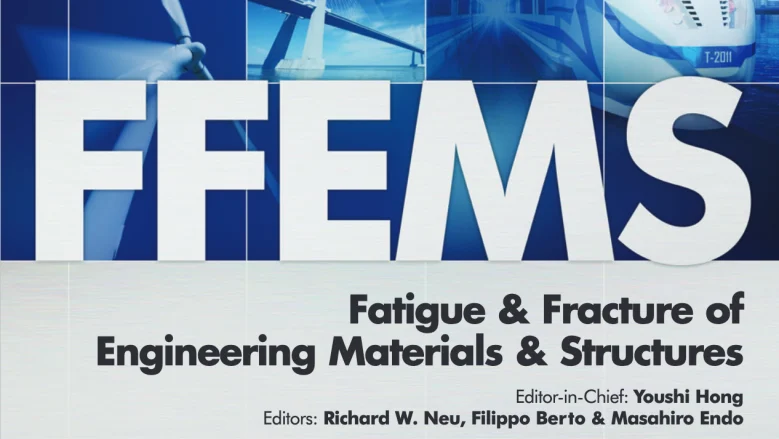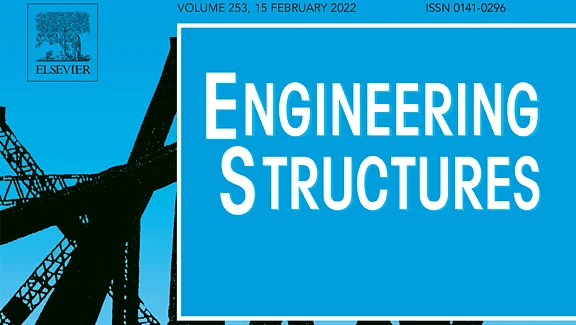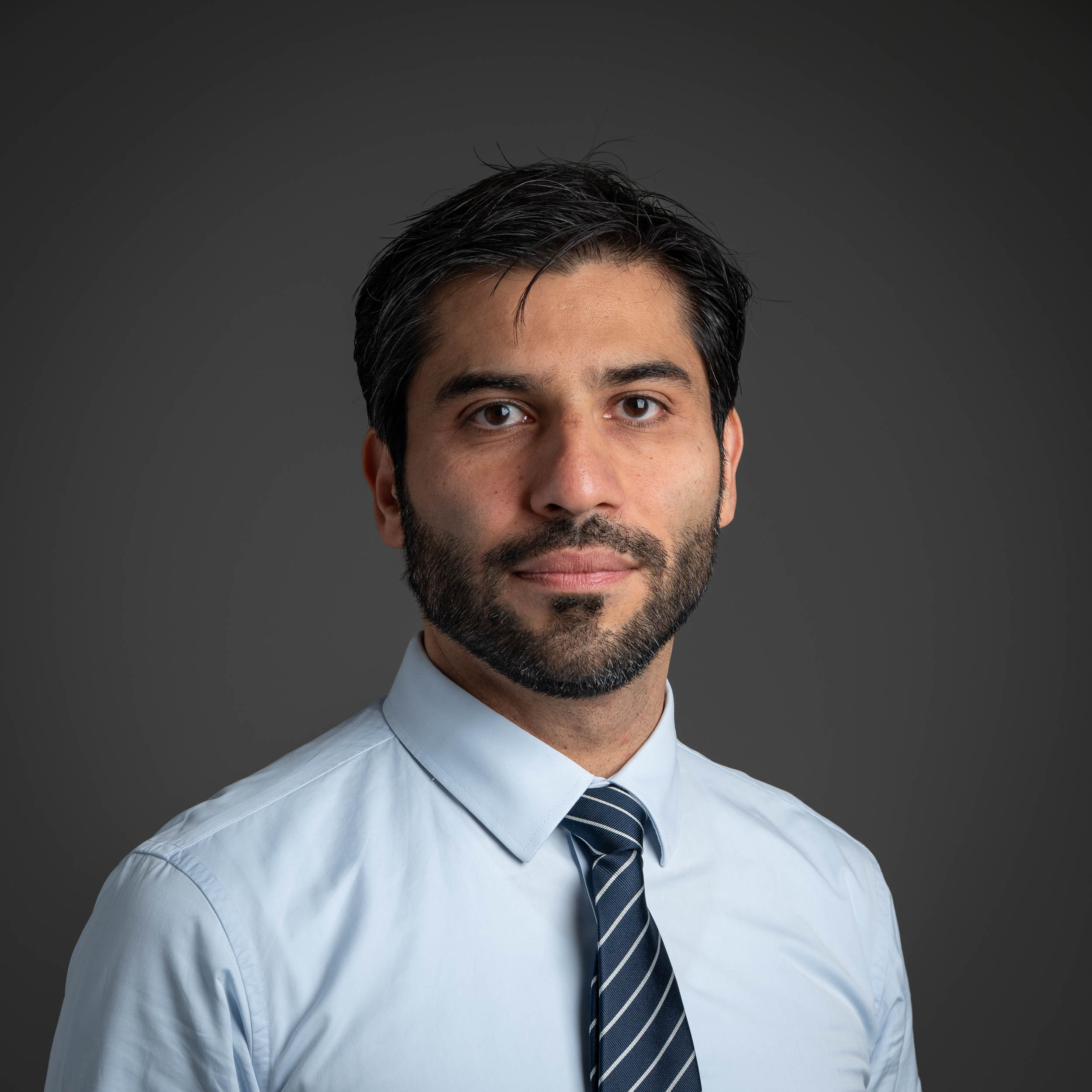
Biography
Alper Kanyilmaz is an associate professor in the Department of Architecture, Built Environment and Construction Engineering of Politecnico di Milano in Italy. He applies data-driven approaches, artificial intelligence, and advanced manufacturing techniques to drive a digitalized and sustainable transition in the Architecture, Engineering, and Construction (AEC) sector towards a life-cycle driven building structures. He has been the principal investigator of 4 EU-projects with a €10 million total budget and 40+ international partners. He is an Expert Advisor for the European Commission Steel Advisory Group (SAG, Mandate 2025-2029) focused on the R&D domain of steel construction applications, and project monitoring expert for European Commission, B.1 – Future Low Emission Industries. He is the coordinator of EU-funded research projects ConstructAdd and LASTTS. He transfers his research experience to the civil engineering and architecture students in terms of teaching, MSc and PhD thesis supervision.
Full article list / Books / Talks
If you would like to cooperate, please contact him.
Research
His three research lines are constructed using both numerical and experimental methods, up to high TRL levels (e.g., pilot-scale):
Highly cited articles:
Kanyilmaz A, Demir A.G., Chierici M., Berto F., Gardner L., Kandukuri S.Y., Kassabian P., Kinoshita T., Laurenti A., Paoletti I., Plessis A., Razavi J., Role of metal 3D printing to increase quality and resource-efficiency in the construction sector, Additive Manufacturing, Volume 50, 2022, 102541, ISSN 2214-8604, https://doi.org/10.1016/j.addma.2021.102541
Kanyilmaz, A., The problematic nature of steel hollow section joint fabrication, and a remedy using laser cutting technology: A review of research, applications, opportunities, Engineering Structures, v. 183, 2019, p. 1027-1048, ISSN 0141-0296, https://doi.org/10.1016/j.engstruct.2018.12.080
Kanyilmaz A., Tichell P.R.N., Loiacono D., A genetic algorithm tool for conceptual structural design with cost and embodied carbon optimization (2022) Engineering Applications of Artificial Intelligence, 112, art. no. 104711, https://doi.org/10.1016/j.engappai.2022.104711
Kanyilmaz A., Dang V., Kondratenko A., How does conceptual design impact the cost and carbon footprint of structures?, Structures, Volume 58, 2023, https://doi.org/10.1016/j.istruc.2023.105102.
Kanyilmaz, A., Birhane, M., Fishwick, R., Castillo C.. Reuse of Steel in the Construction Industry: Challenges and Opportunities. Int J Steel Struct (2023). https://doi.org/10.1007/s13296-023-00778-4.
Menghini A., Kanyilmaz A., Calado L., Castiglioni C.A., Experimental Assessment of the Behavior of Tubular Truss Girder Joints Fabricated with Laser Cutting Technology (2023) Journal of Structural Engineering (United States), 149 (6), https://doi.org/10.1061/JSENDH.STENG-12019
Teaching
He transfers his research experience to the civil engineering and architecture students (300/year) in terms of teaching, MSc and PhD thesis supervision. Moreover, Dr. Kanyilmaz provides industry-focused training courses aimed at mitigating embodied carbon within the Architecture, Engineering, and Construction (AEC) sector (you can contact him for a training request).
Dr. Kanyilmaz’s teaching, blending numerical simulations and hands-on experiments in class, lab, and online, echoes Socratic inquiry: “Can it be, Ischomachus, that asking questions is teaching? I am just beginning to see what is behind all your questions. You lead me on by means of things I know, point to things that resemble them, and persuade me that I know things that I thought I had no knowledge of.”
News
